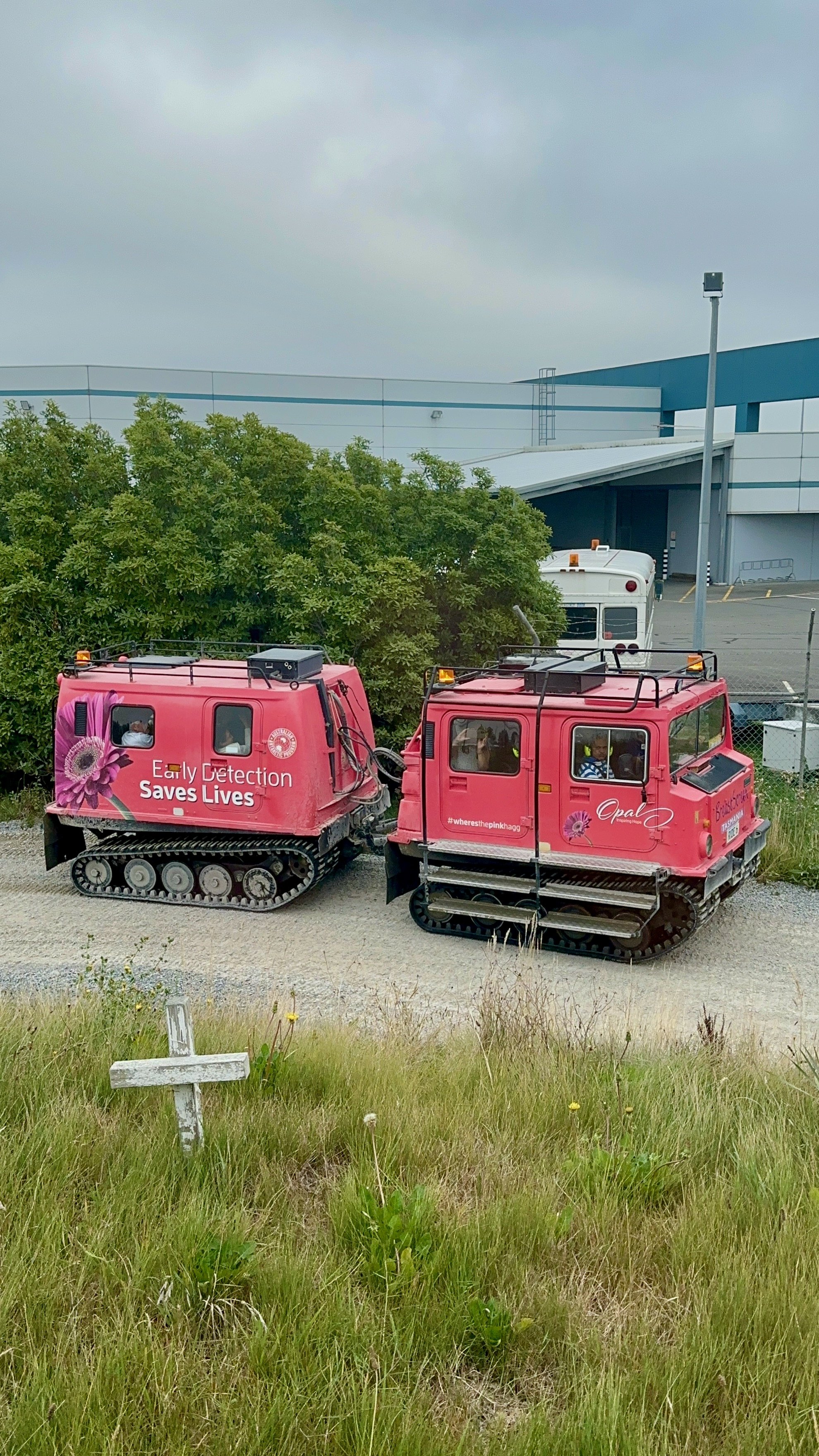New Zealand’s South Island, Part 3: Mt. Cook and the East Coast
“Just like a chief who doesn’t come out for every appearance, Aoraki can only be seen 1 in every 3 days.” Mt Cook is the tallest mountain in Australasia, measuring in at 3724m (12,217 ft). It is usually shrouded in clouds and was named Aoraki “cloud piercer” by the Māori. The Mt Cook National Park mountain range contains 19 of the 23 mountains in NZ that measure over 3000m.
We arrived in the early evening to a perfectly clear sky and we were able to take in the full force of Mt Cook. The Glentanner campground also overlooked Mt Cook and we had stunning views all evening and into night. We were even able to get a short glimpse of a pink sunset reflecting off the western face!
The weather forecast showed clouds rolling in overnight and the next morning when we woke up the top of Mt Cook was covered. As the day progressed, we lost sight of the mountain as it retreated back into its curtain of clouds. We visited the Mt Cook visitors center, which is one of the most beautiful visitor centers, and then a pretty underwhelming Tasman Glacier Lookout. Our original plan was to hike the Hooker Valley Track to the base of Mt Cook but due to poor visibility and overall fatigue, we decided to opt out of the 7 mile hike. Instead, we began our drive towards Timaru, stopping by the famous Fairlie Bakehouse for meat pies.

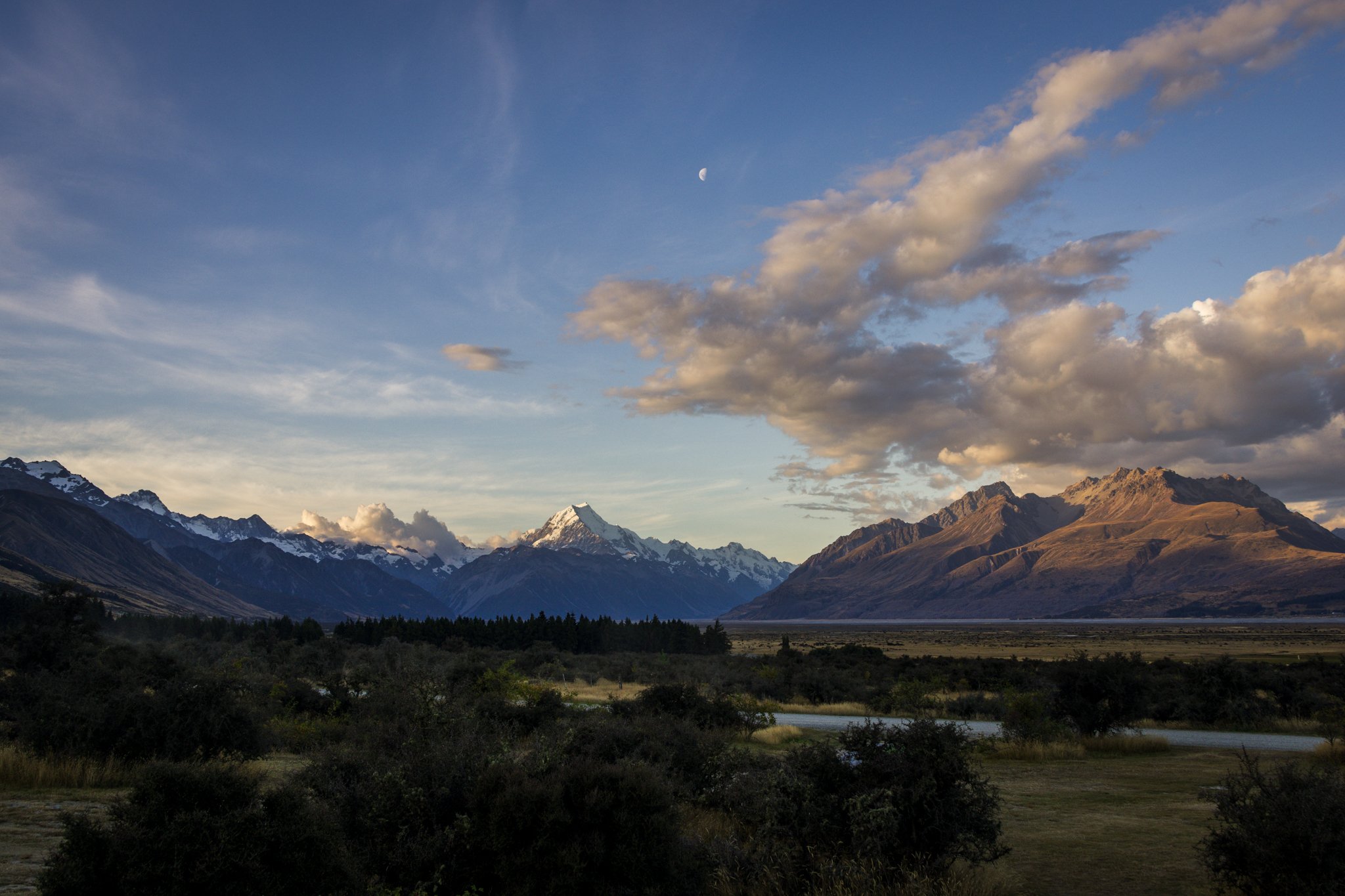
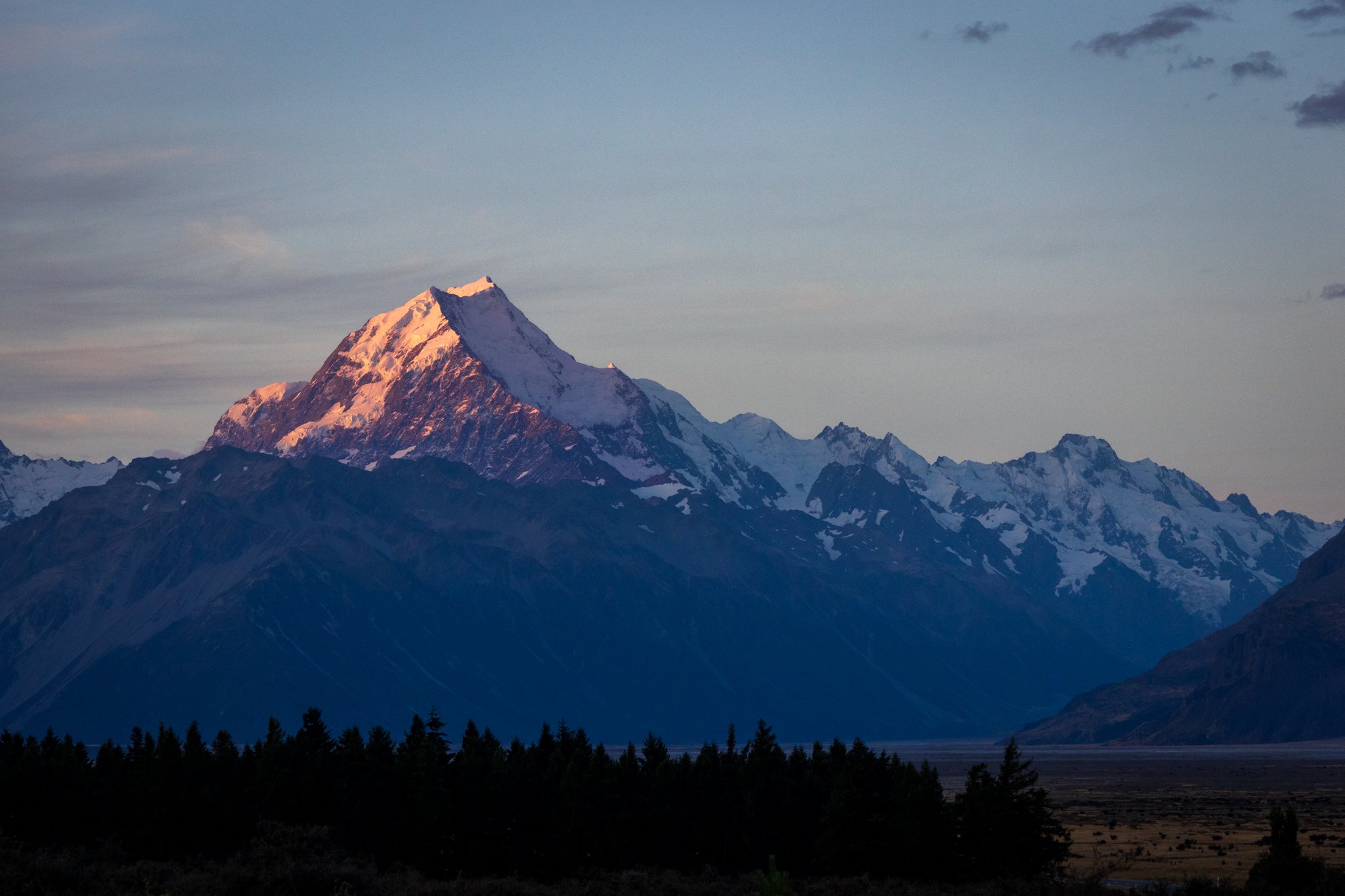

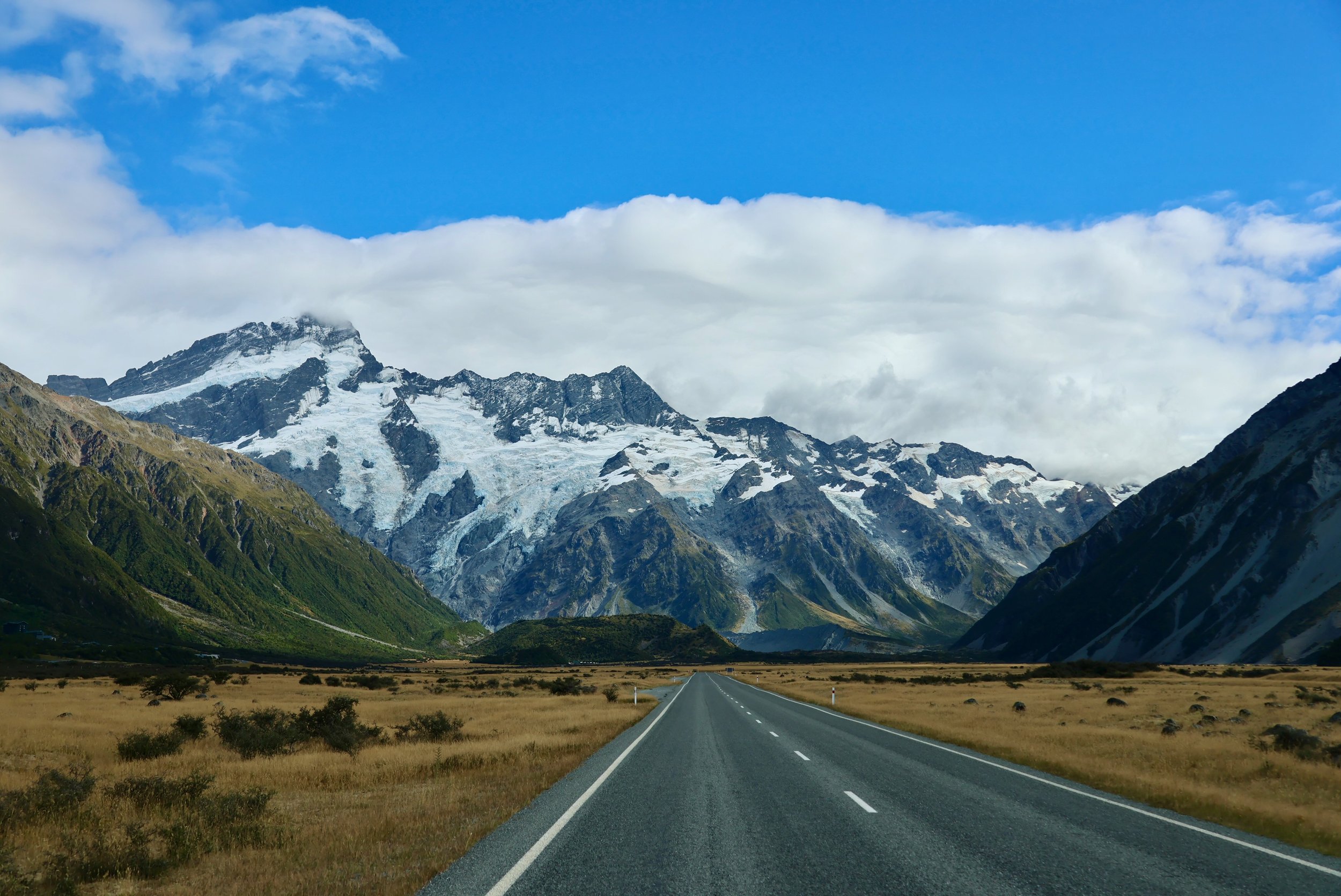

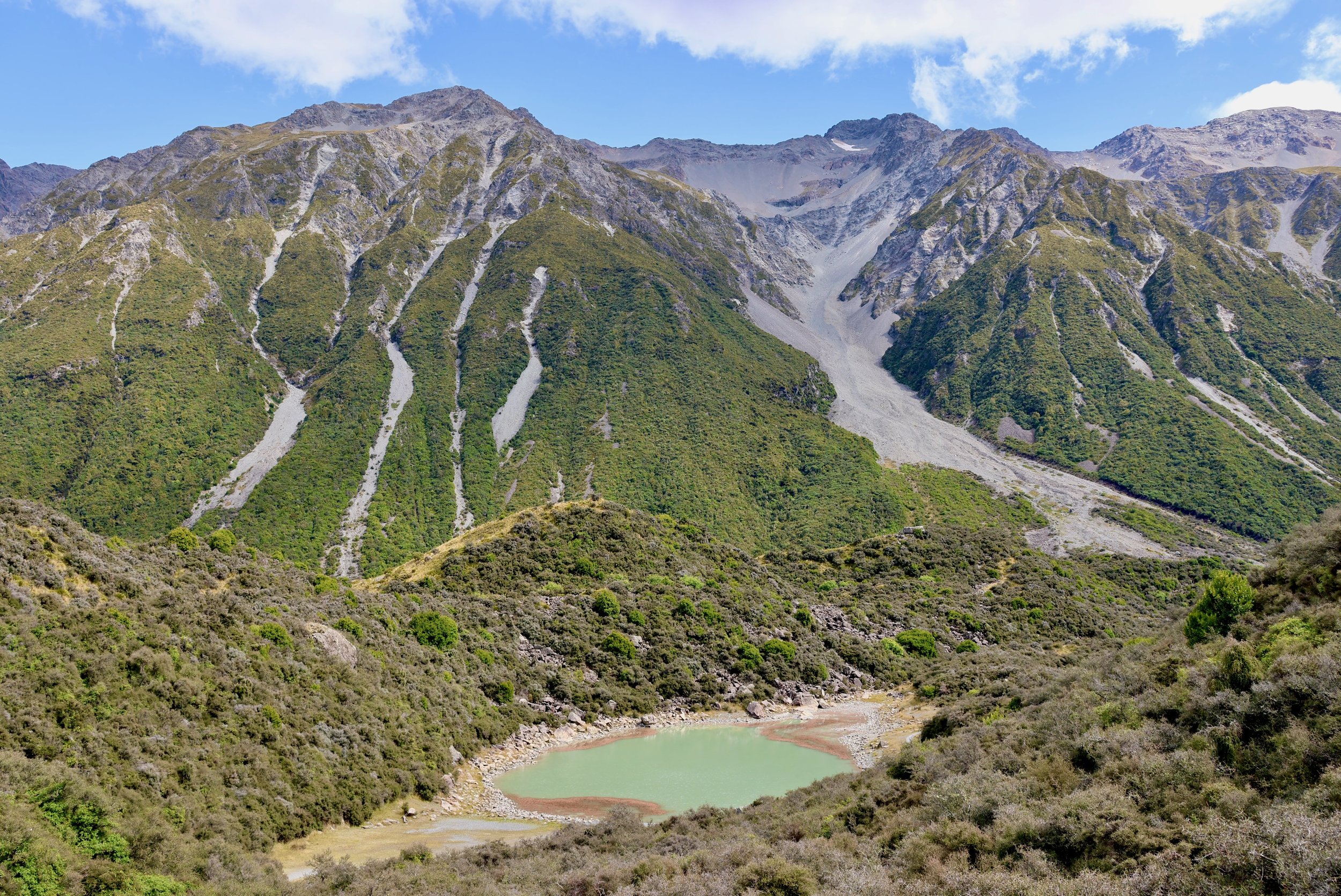
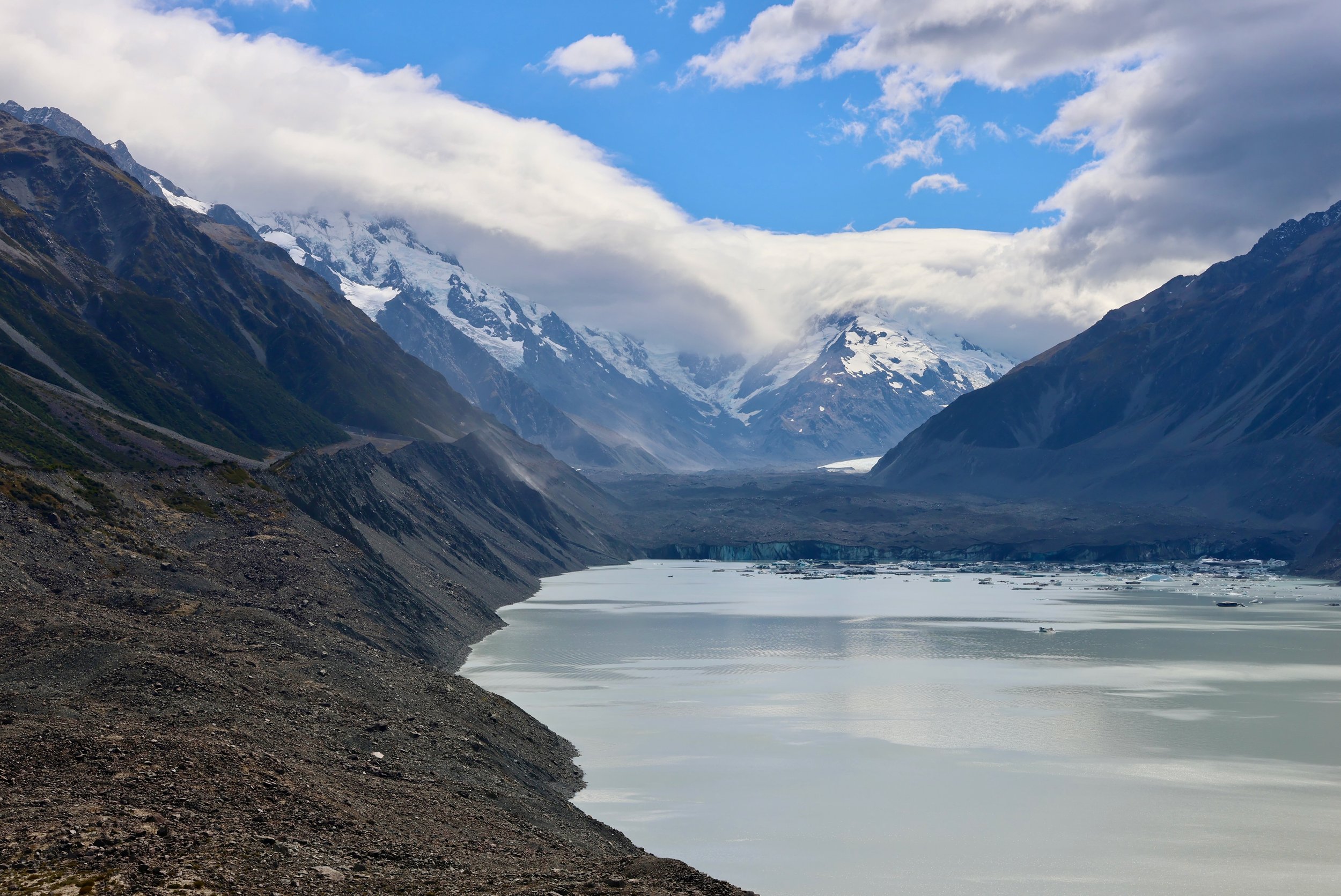
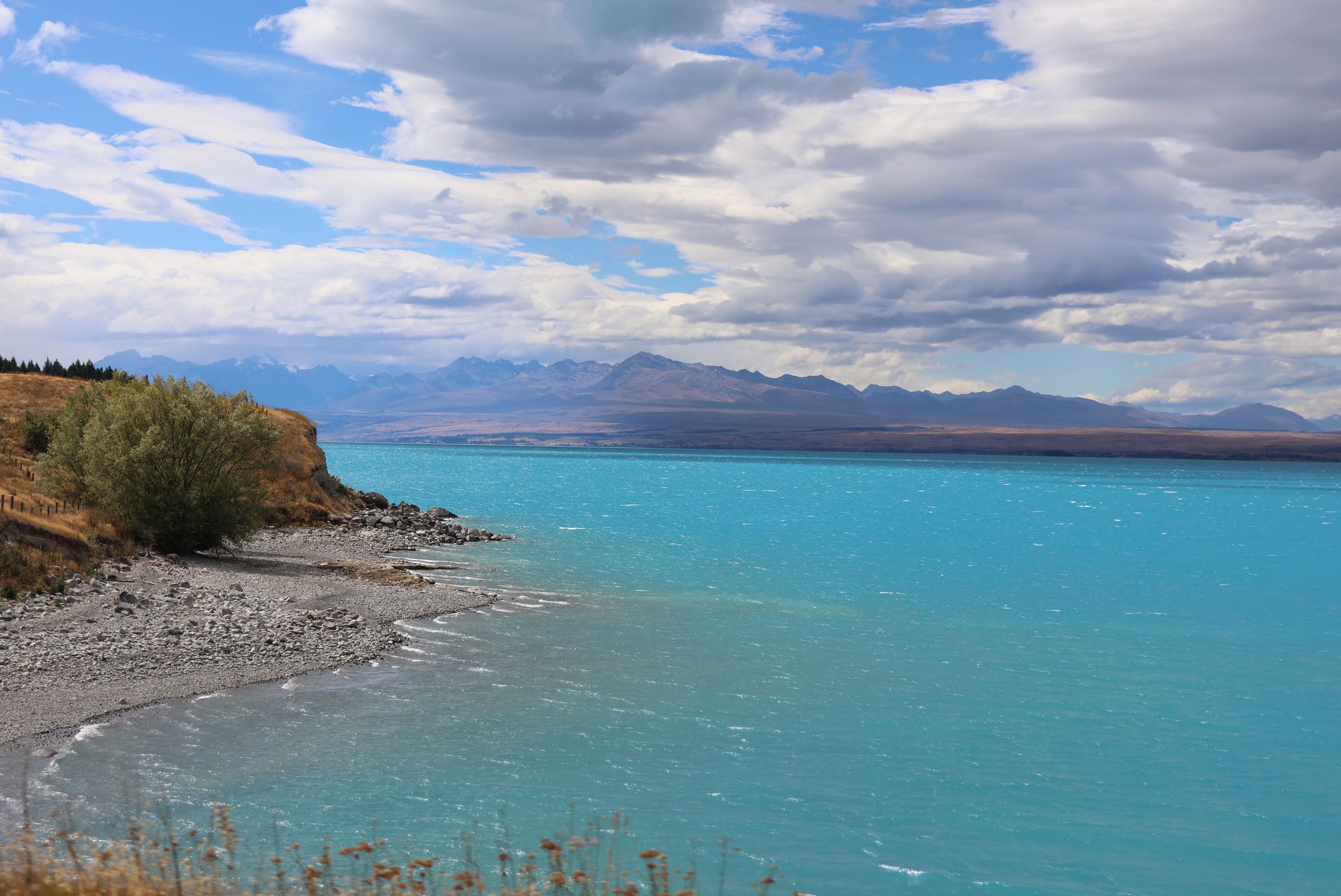
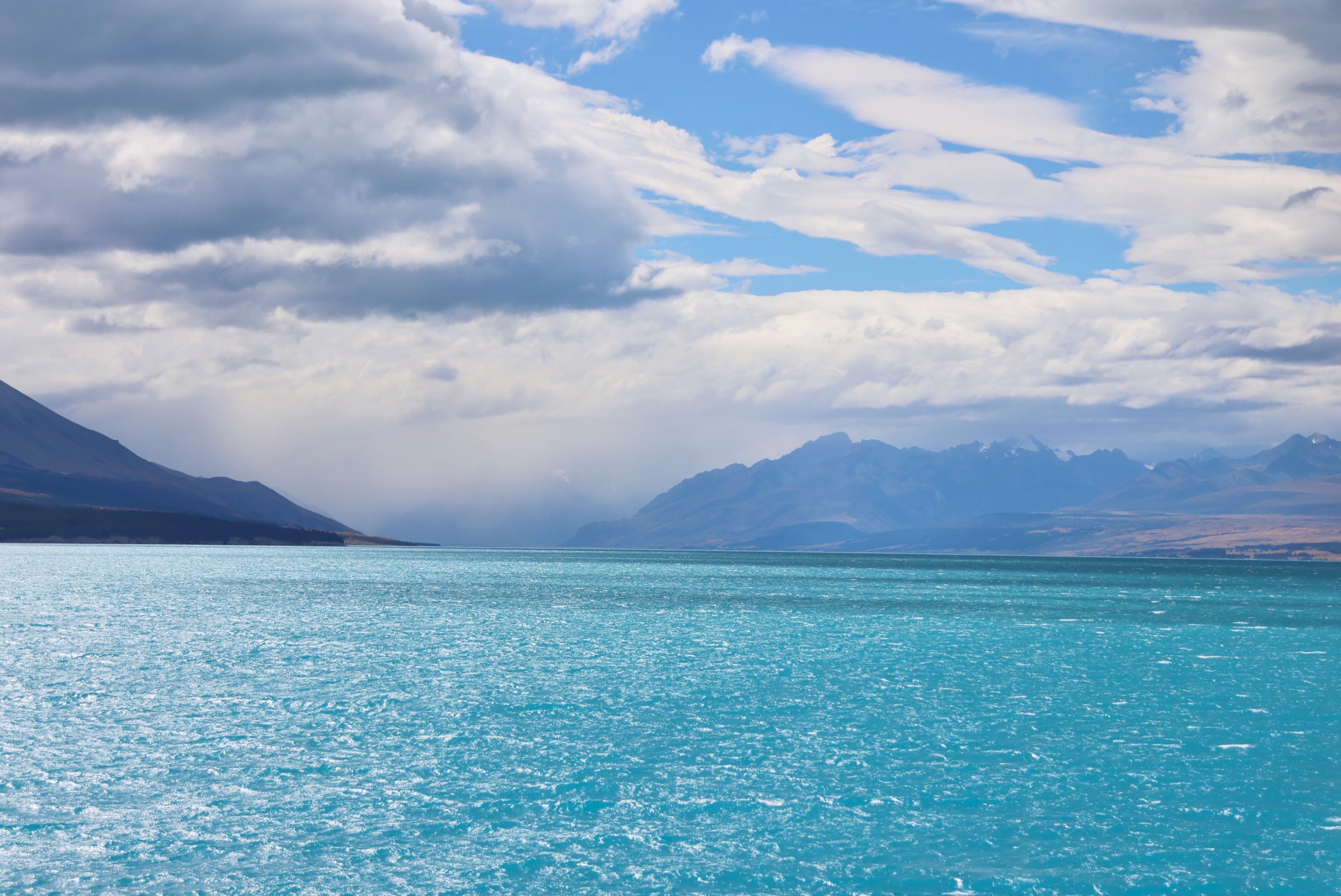
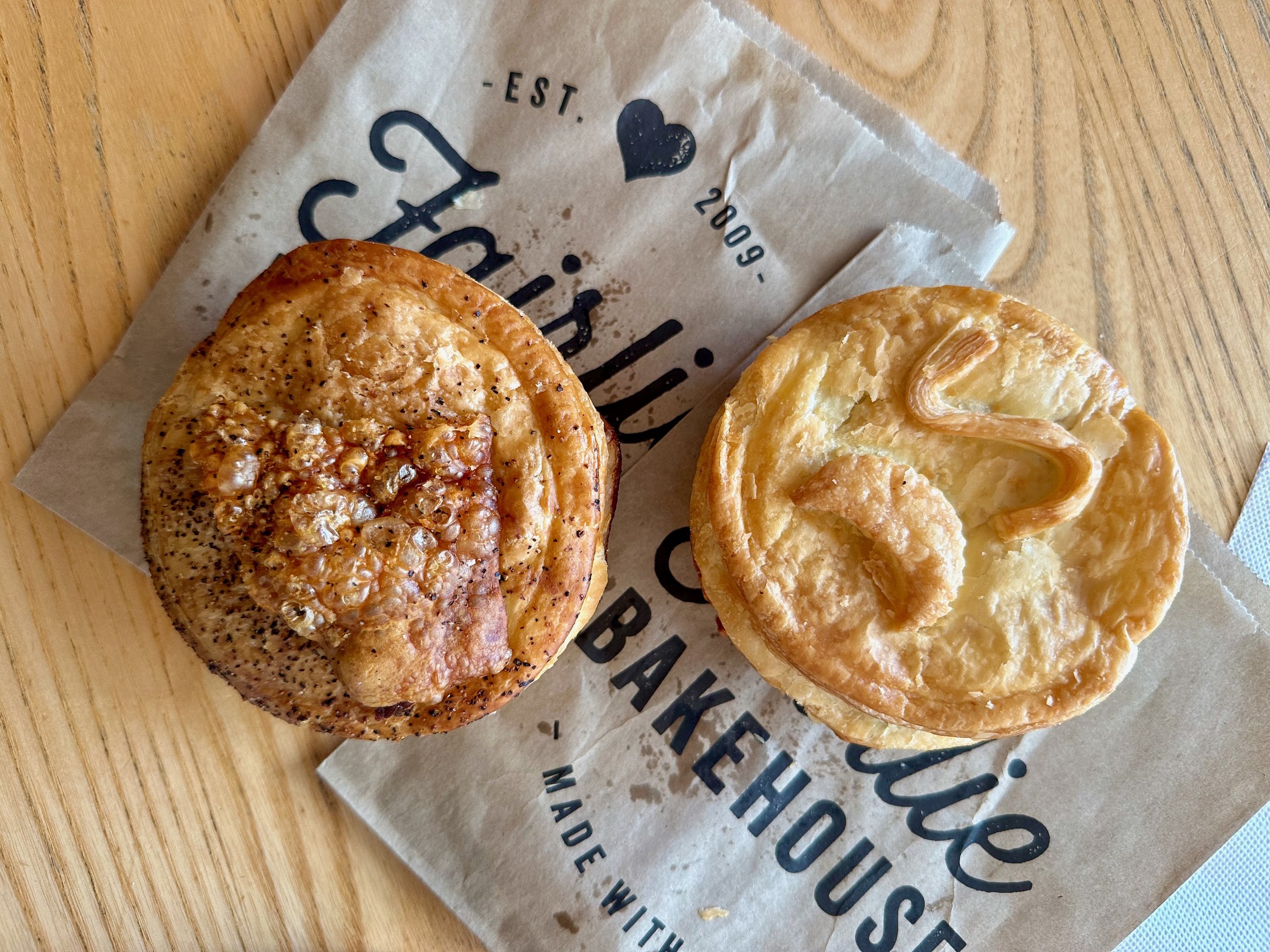
The following day, we drove the rest of the way to Christchurch. Christchurch is an energetic, vibrant city undergoing an epic rebuild following the second worst natural disaster in New Zealand’s history, the 2011 earthquakes. Over 80% of the buildings in Christchurch needed to be demolished after the quake. The major earthquake occurred 5 days after Susan flew through Christchurch with study abroad friends in Feb 2011. They unfortunately did not stop to see the city at all on that trip.
One of the most iconic buildings destroyed in the earthquake was the ChristChurch Cathedral in the center square. The building had so much damage that it was set to be demolished a few years later before a Reinstatement Act was enacted in 2017 to provide funds. The restoration began in May 2020 and should take 7-10 years. The first people entered the church (in a controlled setting) in 2022 and complete stabilization of the structure should be ready any time now. Once the building is stabilized, then rebuilding the iconic 63m (189ft) steeple and stained-glass rose window, in addition to everything else, can begin! We spent the day in the city center, walking along the Avon River Precinct, and visiting Quake City museum. It felt good being back in a major city!
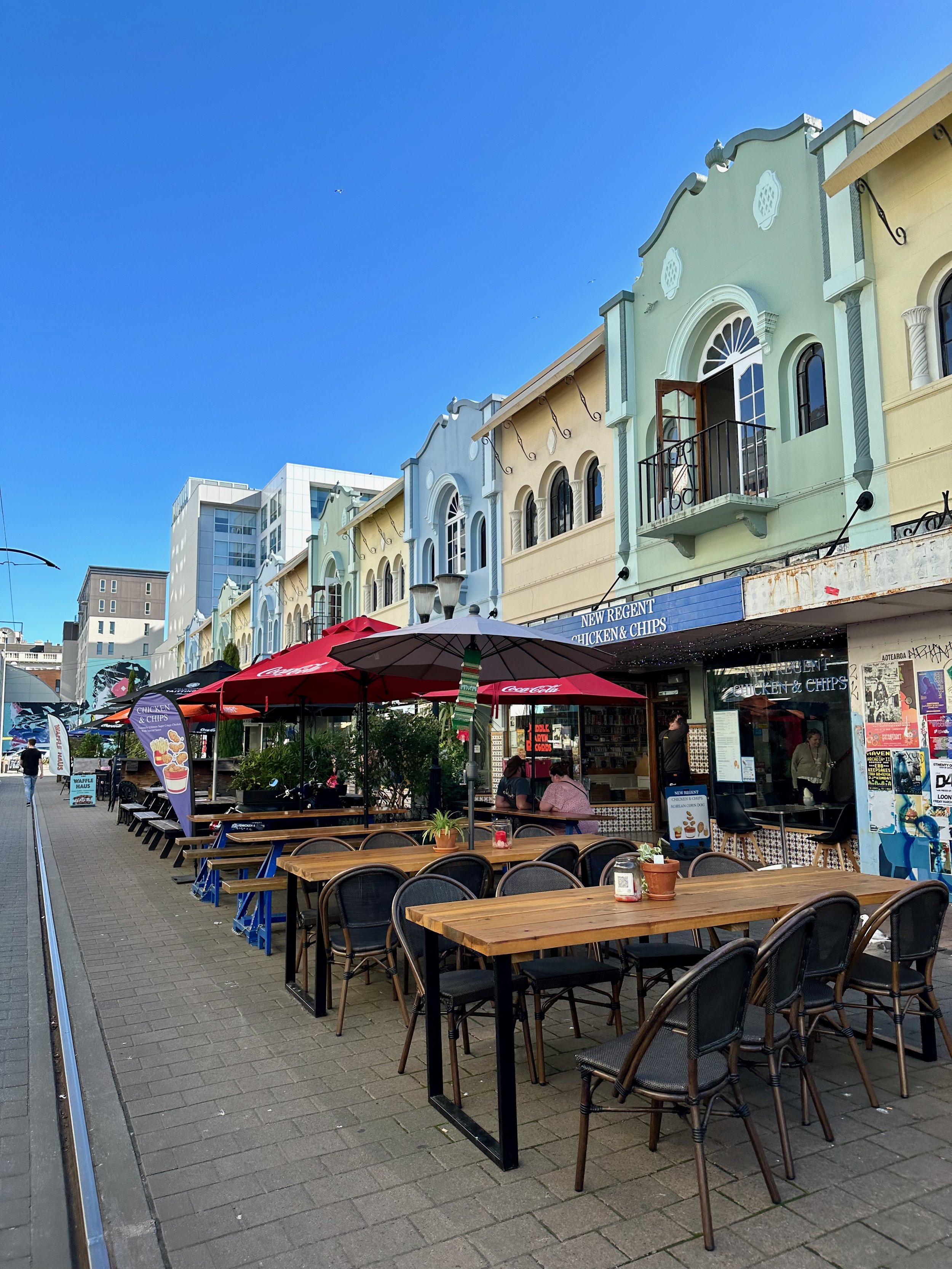

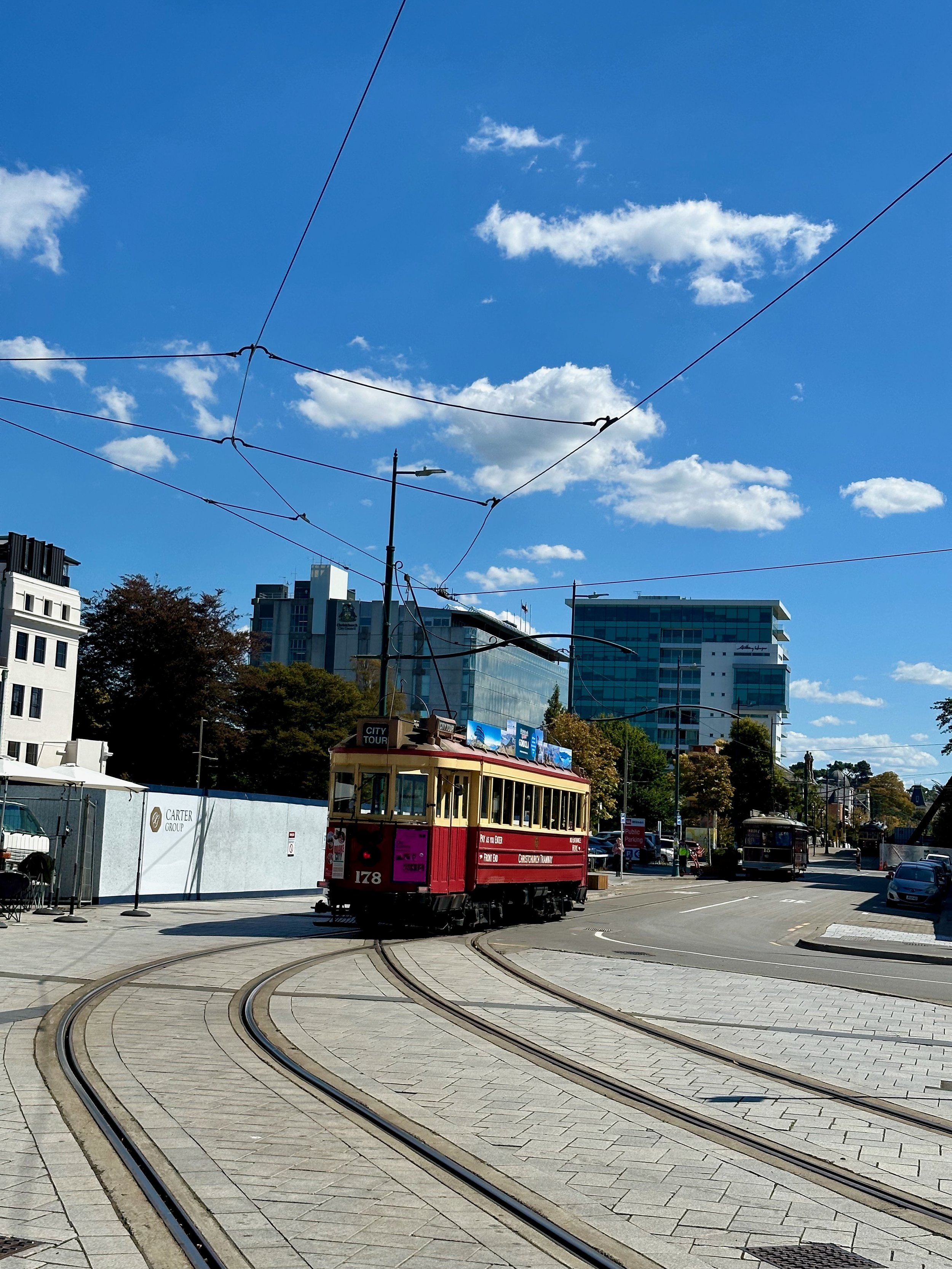
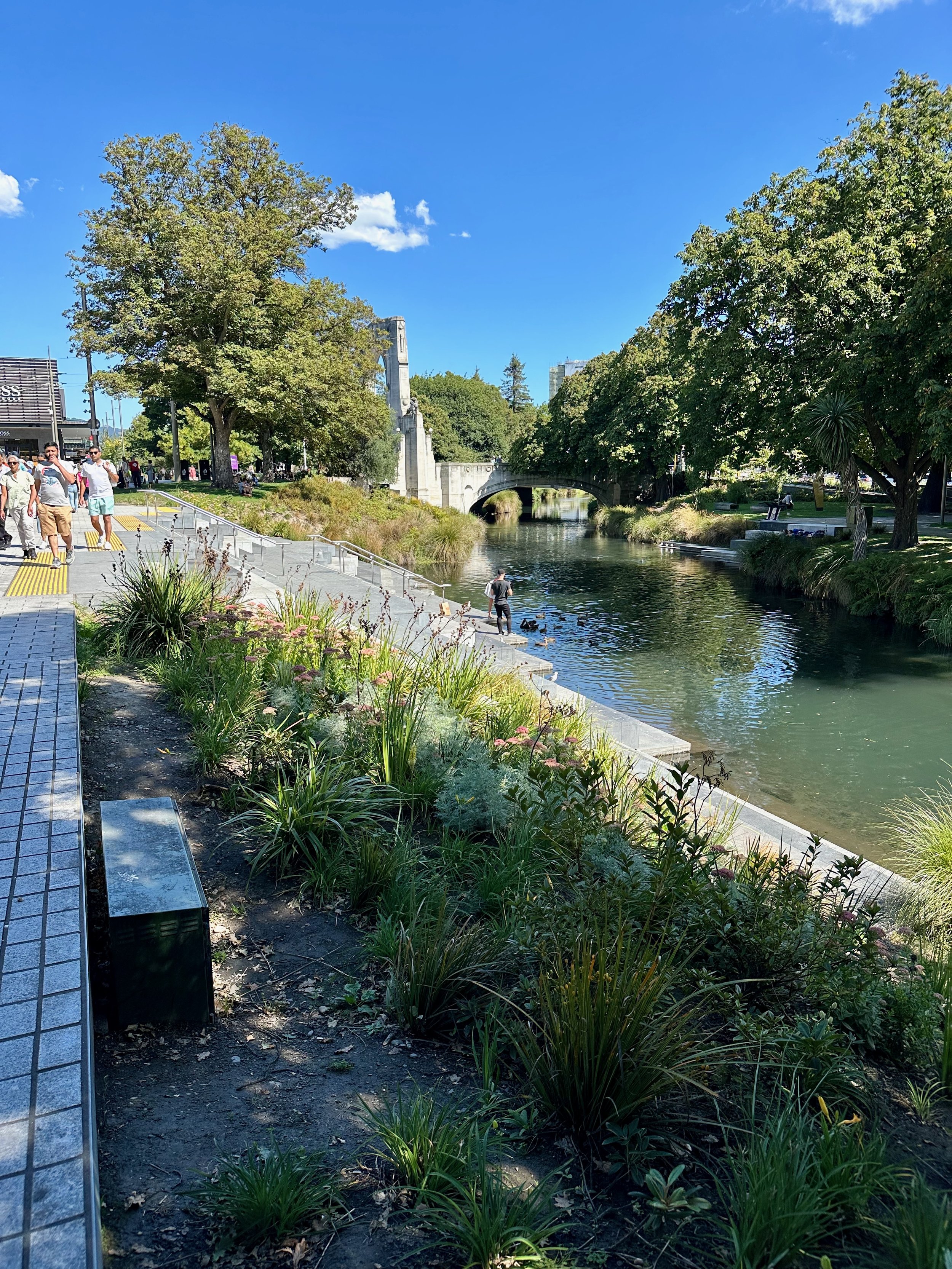
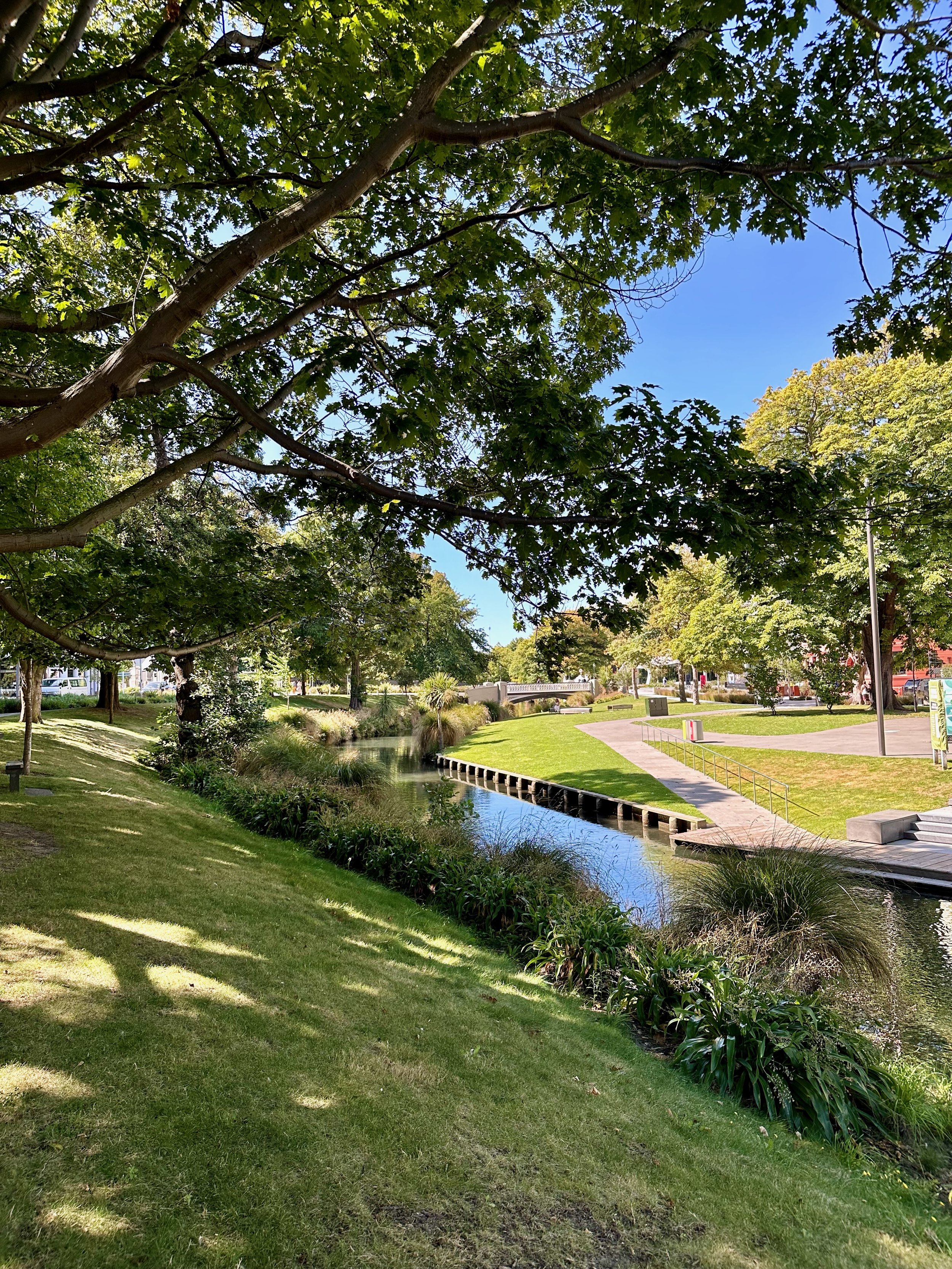
On our second day in Christchurch, we went to the International Antarctic Center (Best. Museum. Ever.) Fun fact = visiting Antarctica is a huge bucket list item for Susan. Matt gets horribly seasick and hates the cold so this was a good compromise for now 😅 Okay but seriously, despite being heavily biased on the subject matter, this museum had so many interesting activities to take part to help learn about Antarctica!
Our museum adventure started with a Hägglunds BV206 ride through an obstacle course! We strapped in and headed off behind the museum to a 10 event obstacle course representing different terrains found in Antarctica. The Hägglunds 4 tracks are very wide to allow for a light footprint and each track can swivel independently to cross crevasse with ease!
The next stop was the Antarctic Storm! We entered a room with real snow on the ground at -8C (17 F) that dropped down to -18C (0 F) with howling winds 🥶 we definitely did not dress appropriately for the storm!!
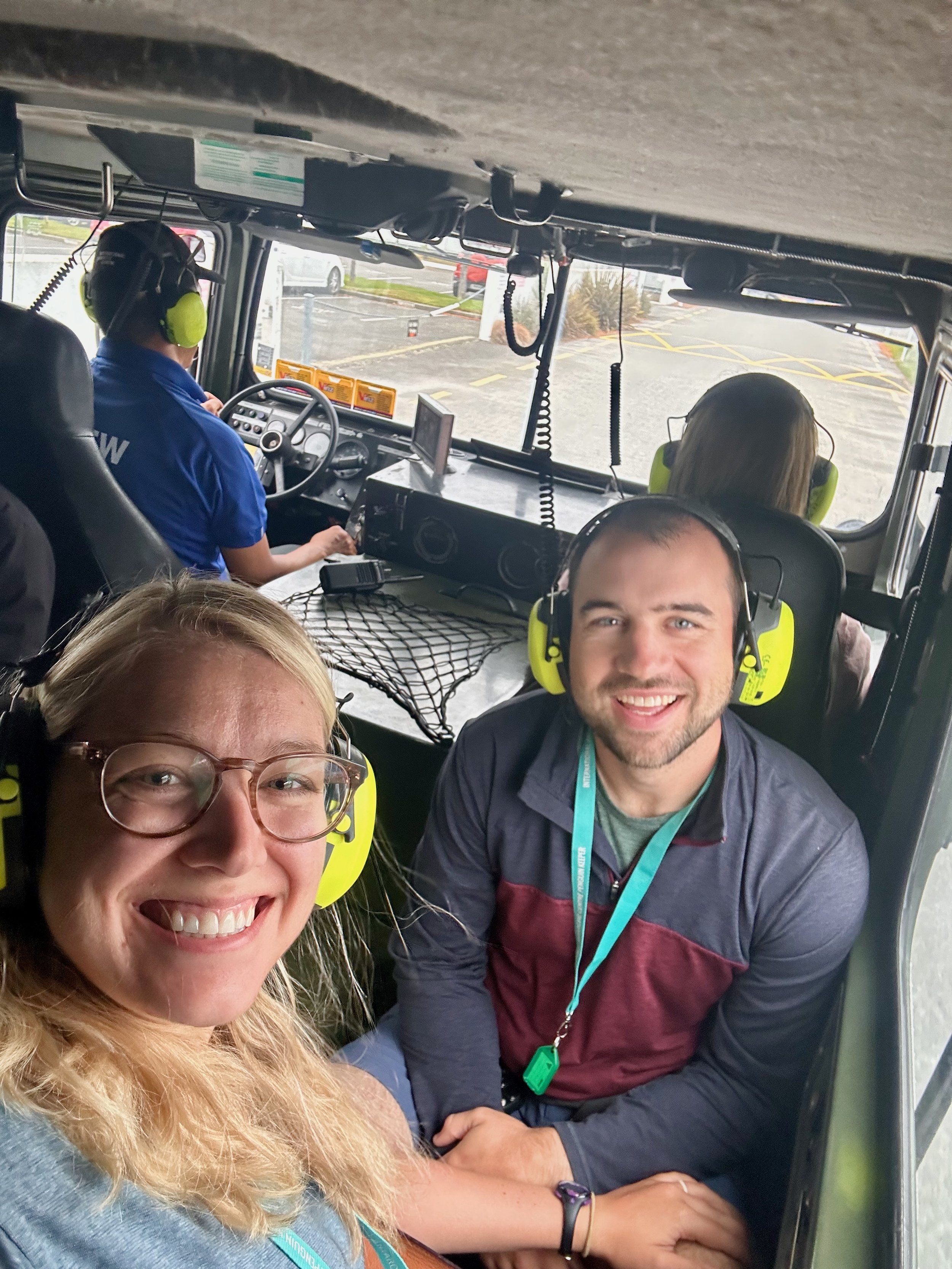
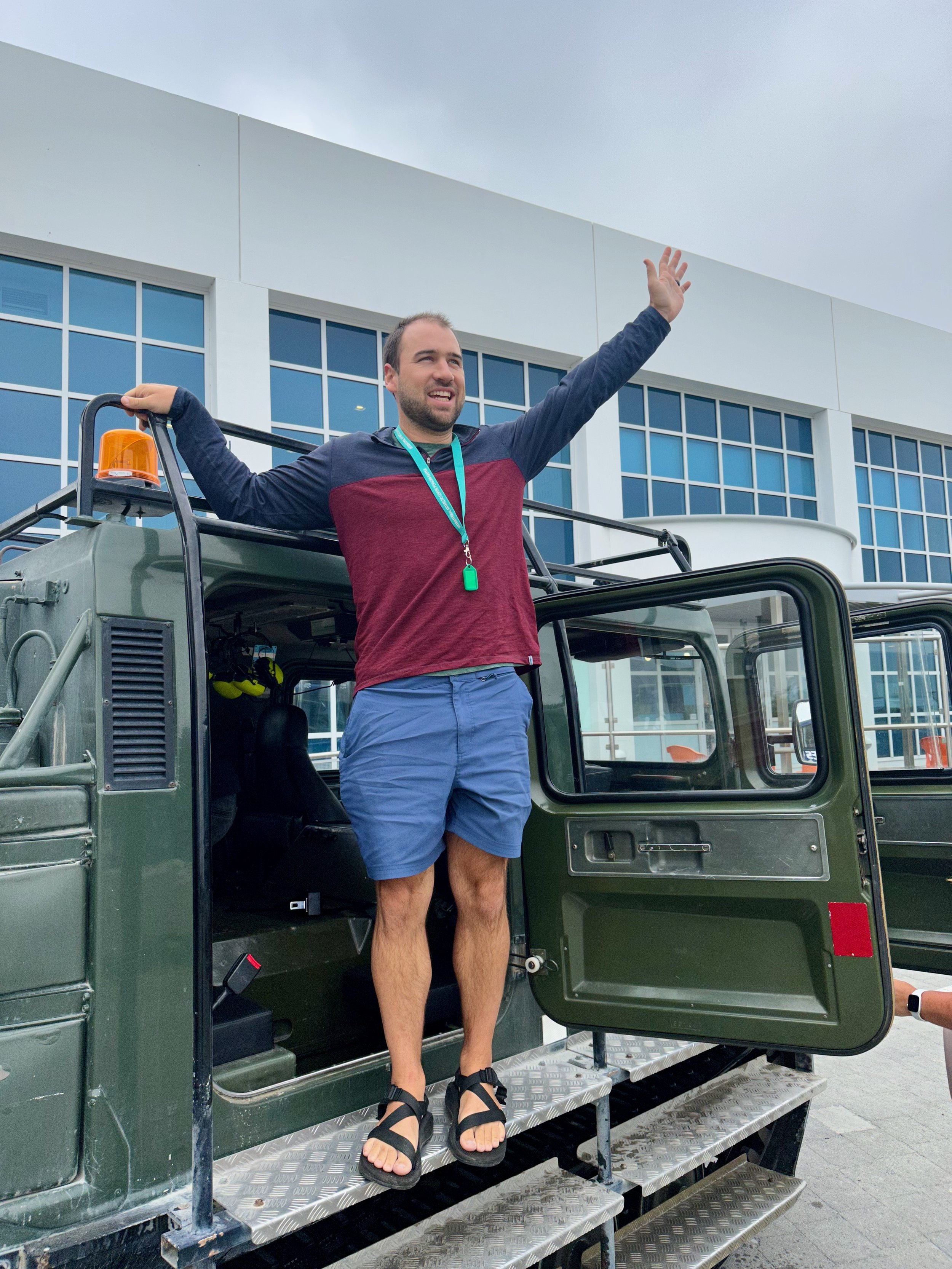
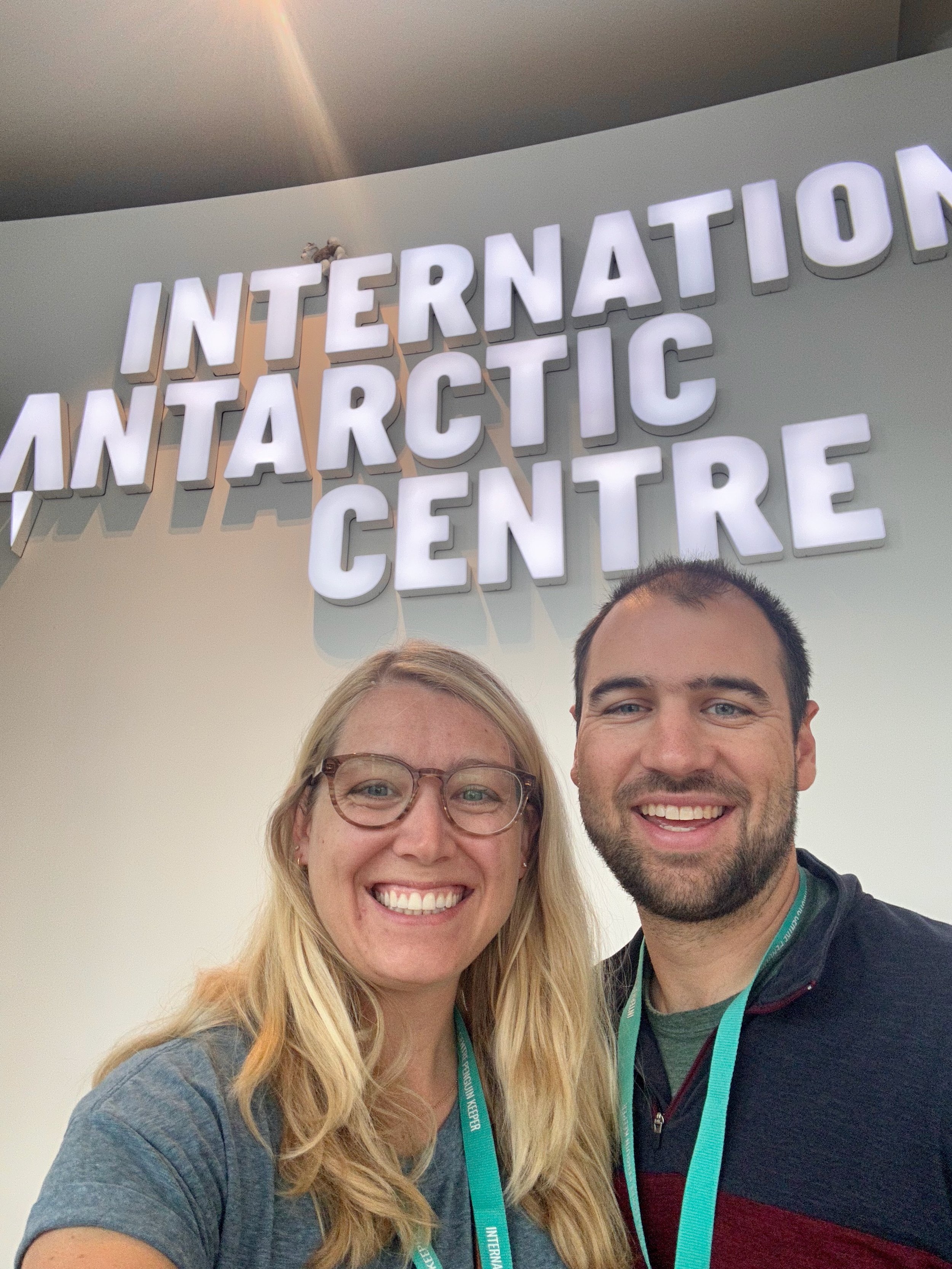
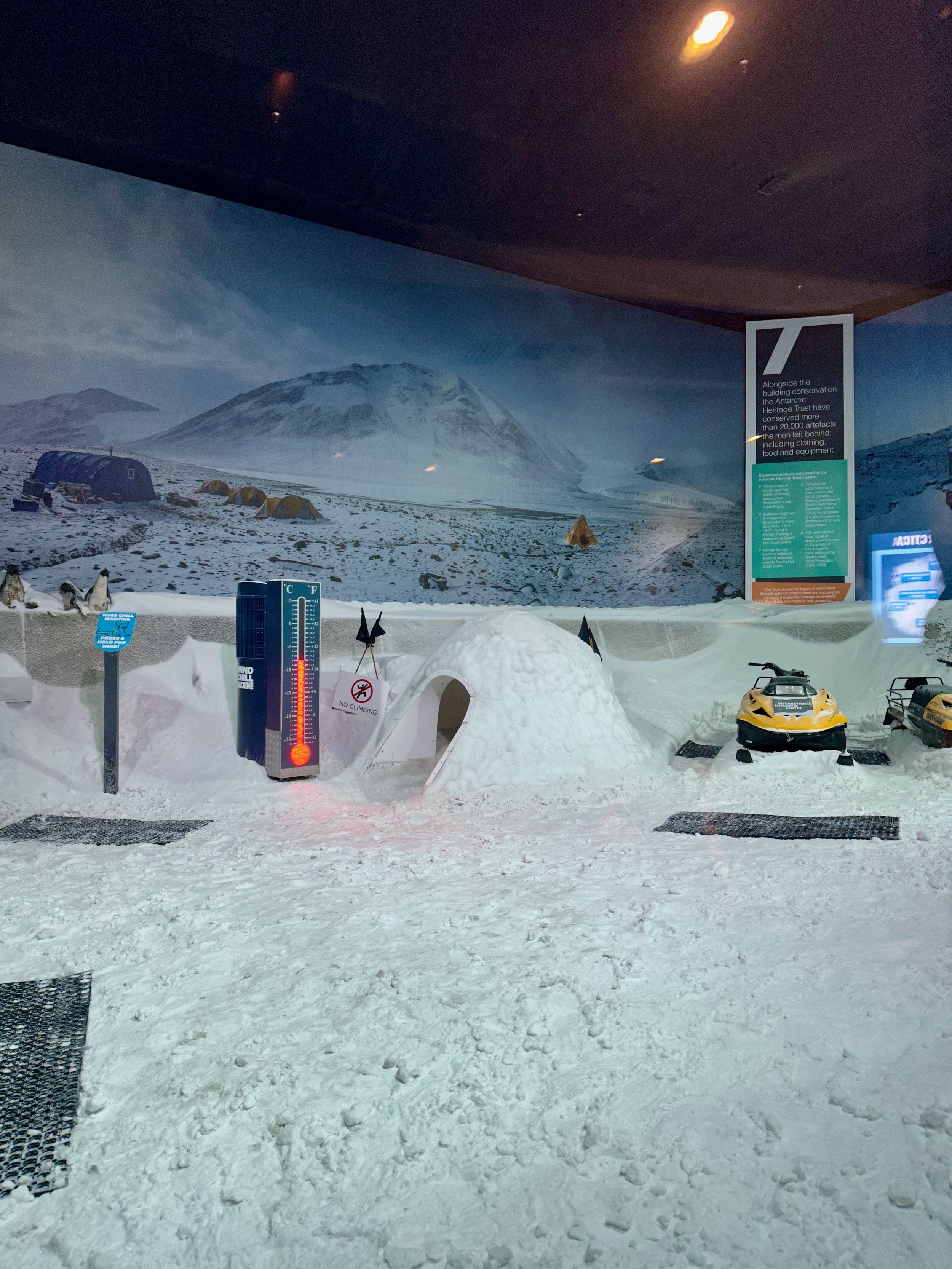
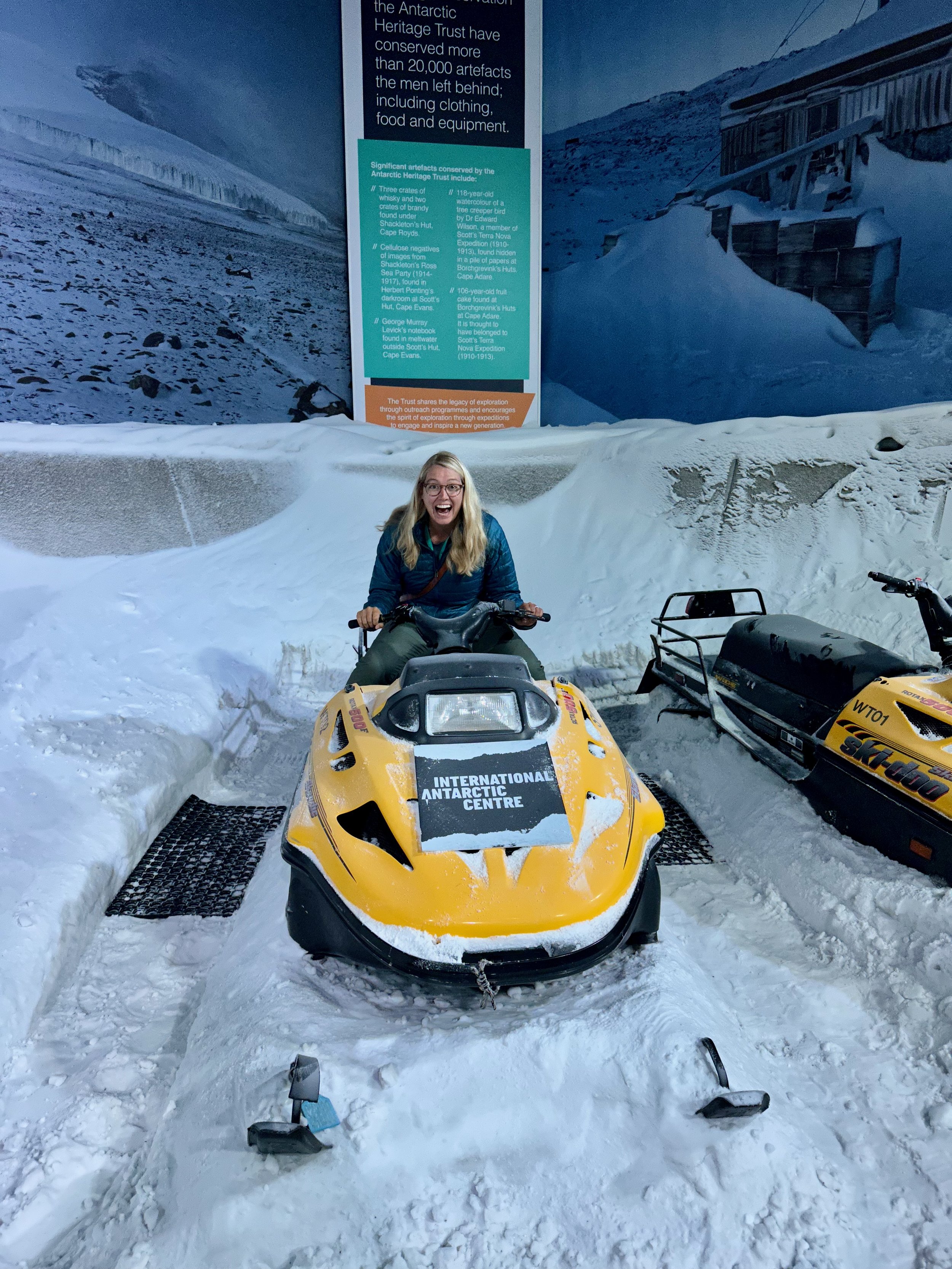
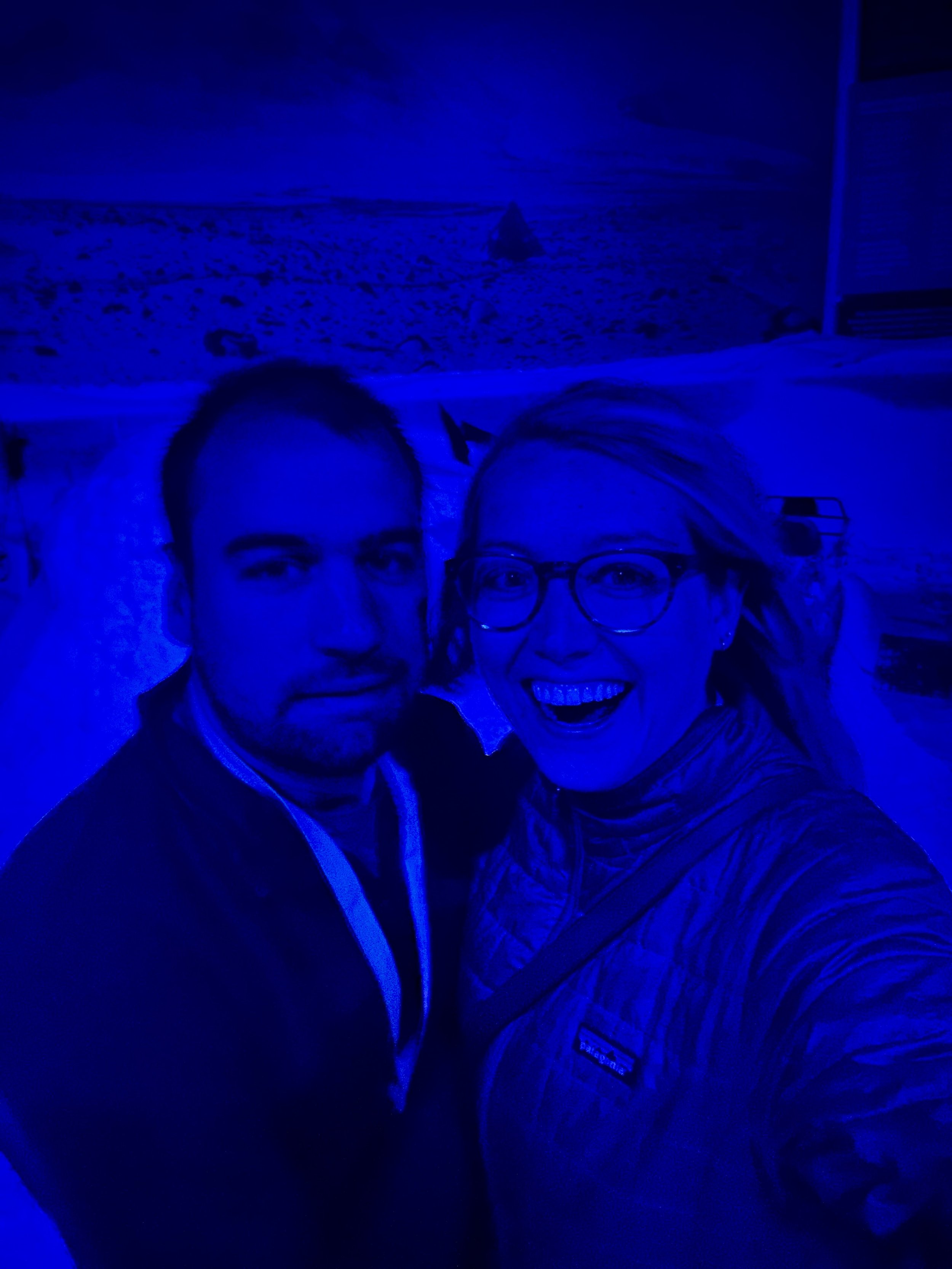
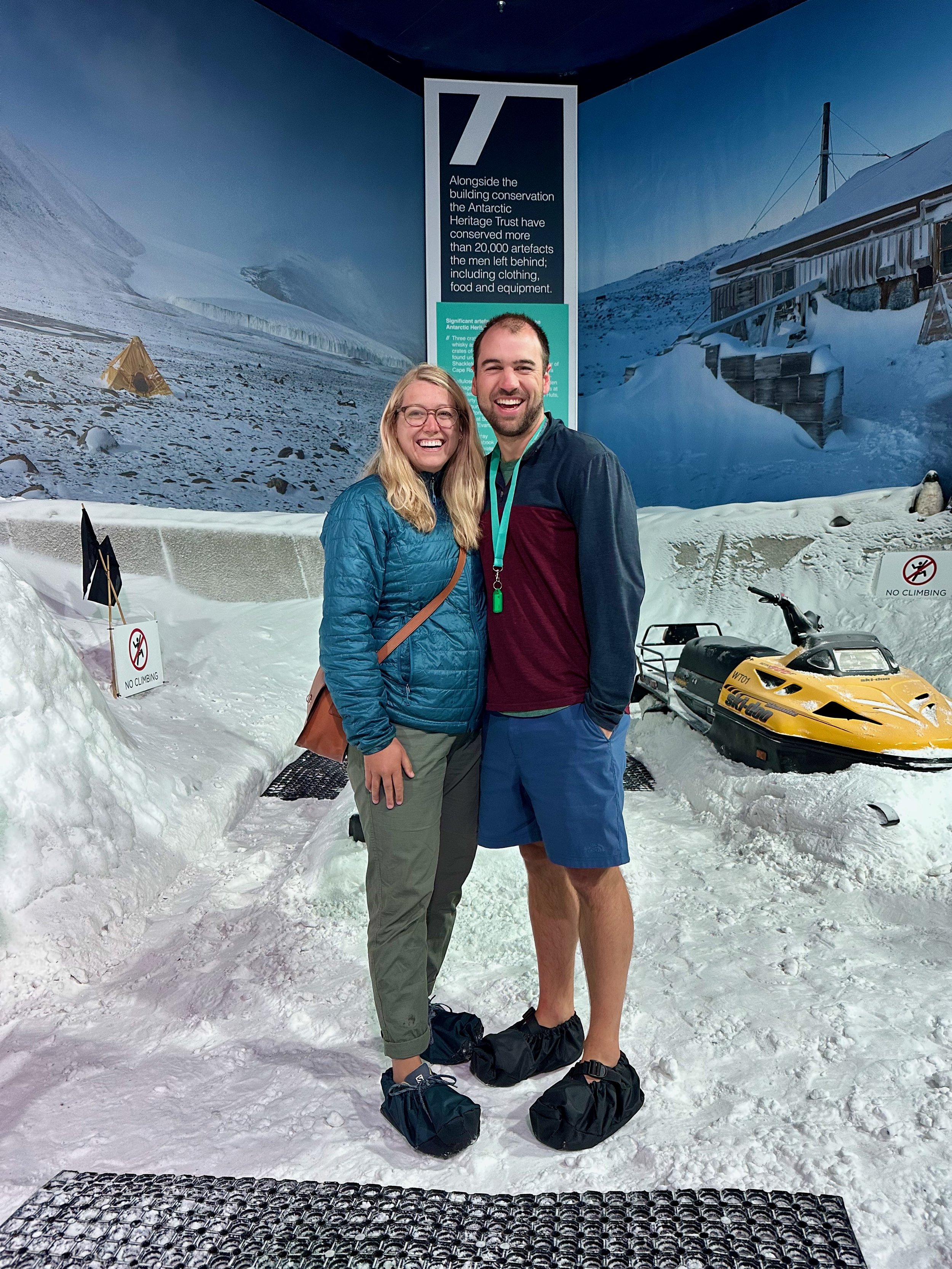
Then came the penguins!! The Antarctic center is also a rescue facility for injured Little Blue Penguins! These are the smallest penguins in the world and live in NZ (not Antartica lol). They have a morning and afternoon feeding and education talk. We also signed up for the behind the scenes penguin experience. We were able to go into the penguin exhibit and into the back office. A little penguin named Lizzie was in the back office for a checkup and weigh-in to make sure she was growing well. We were able to watch her play with the stimulation toys and see her up close.
The icing on the cake for this museum getting top reviews was the husky encounter. Huskies were the main work dogs in Antartica up until 1994 when they finally stopped using dogs and only used technology. These 3 huskies come to the center with their owner to help with education. We were mostly there for the pets and snuggles 😍
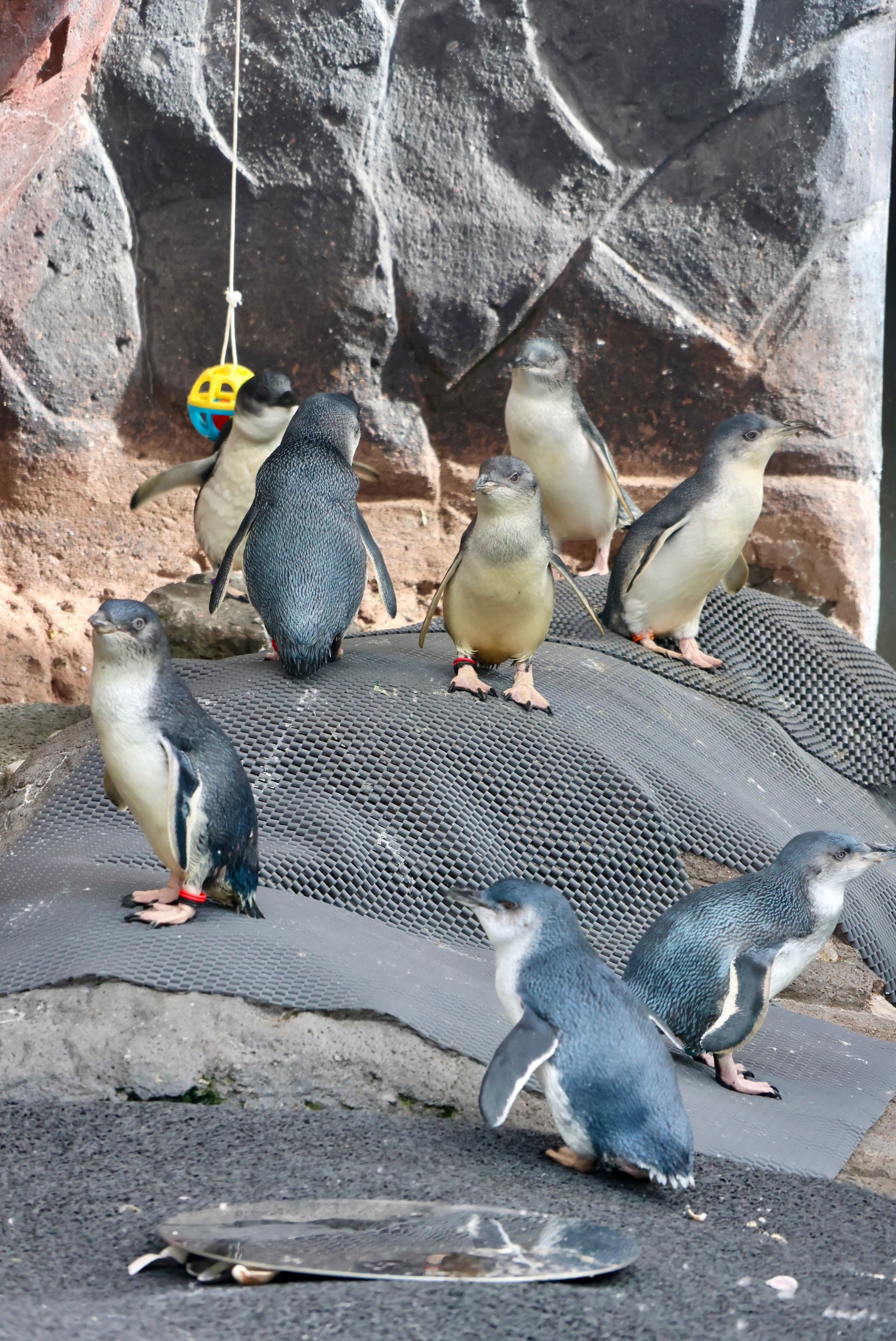

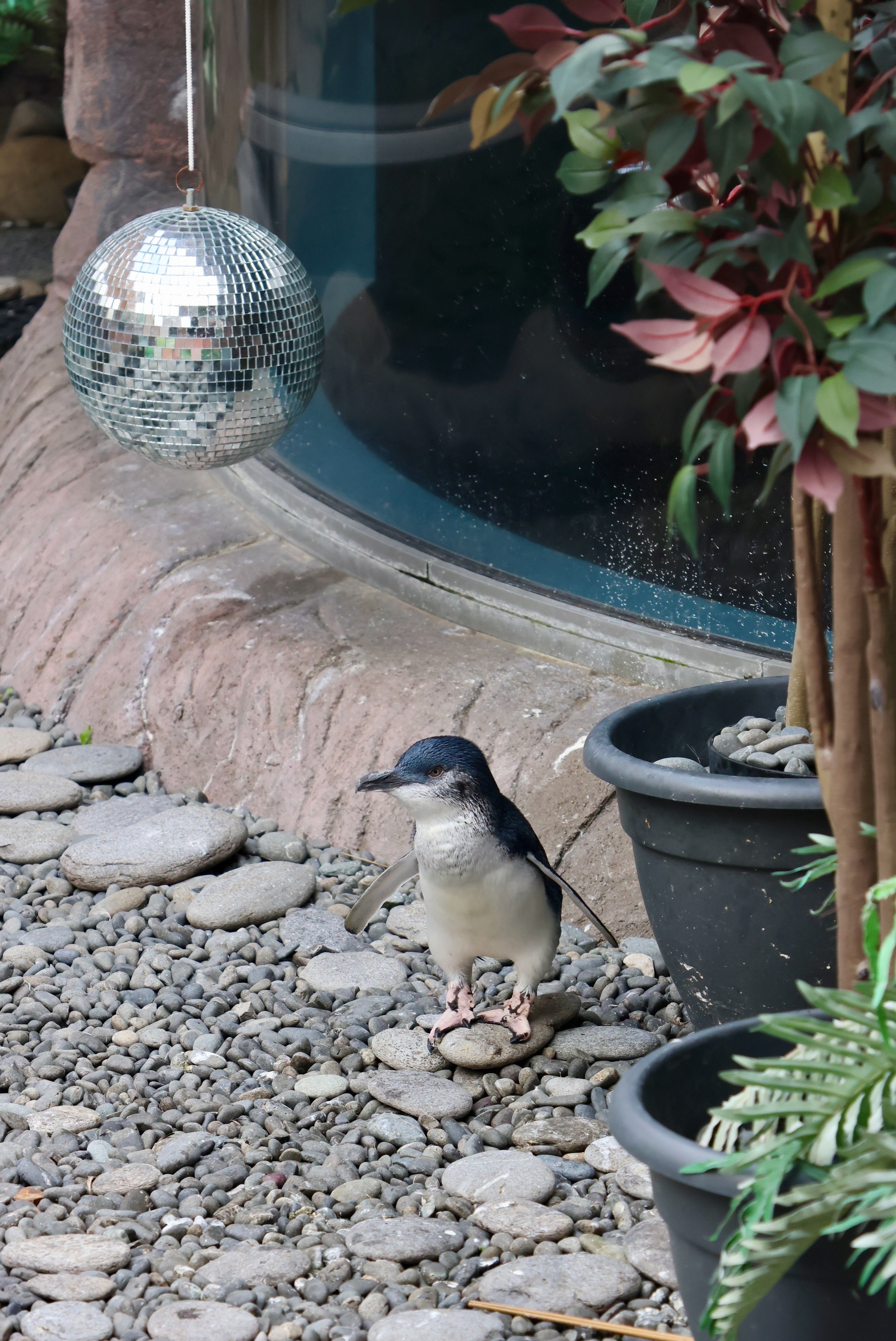
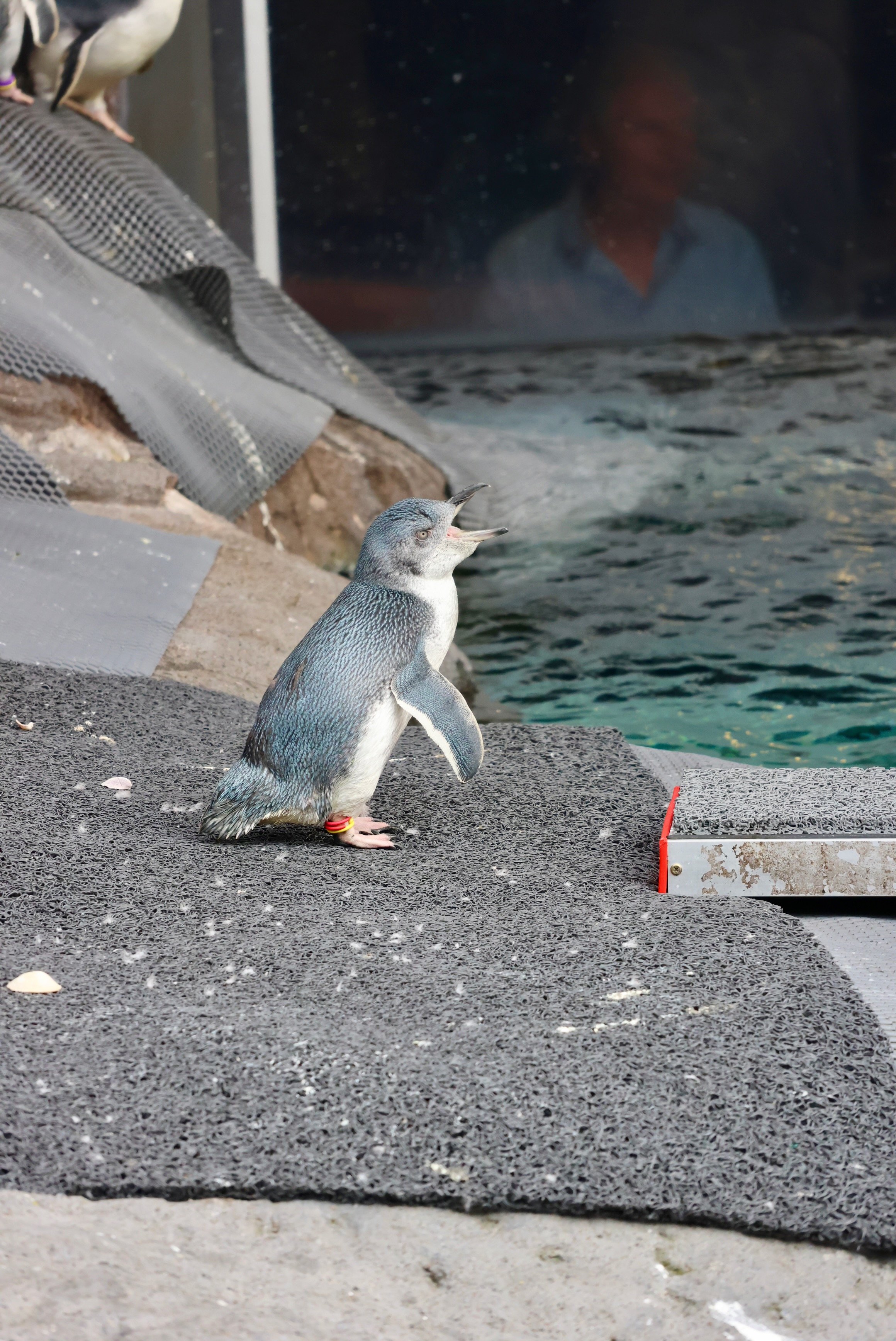
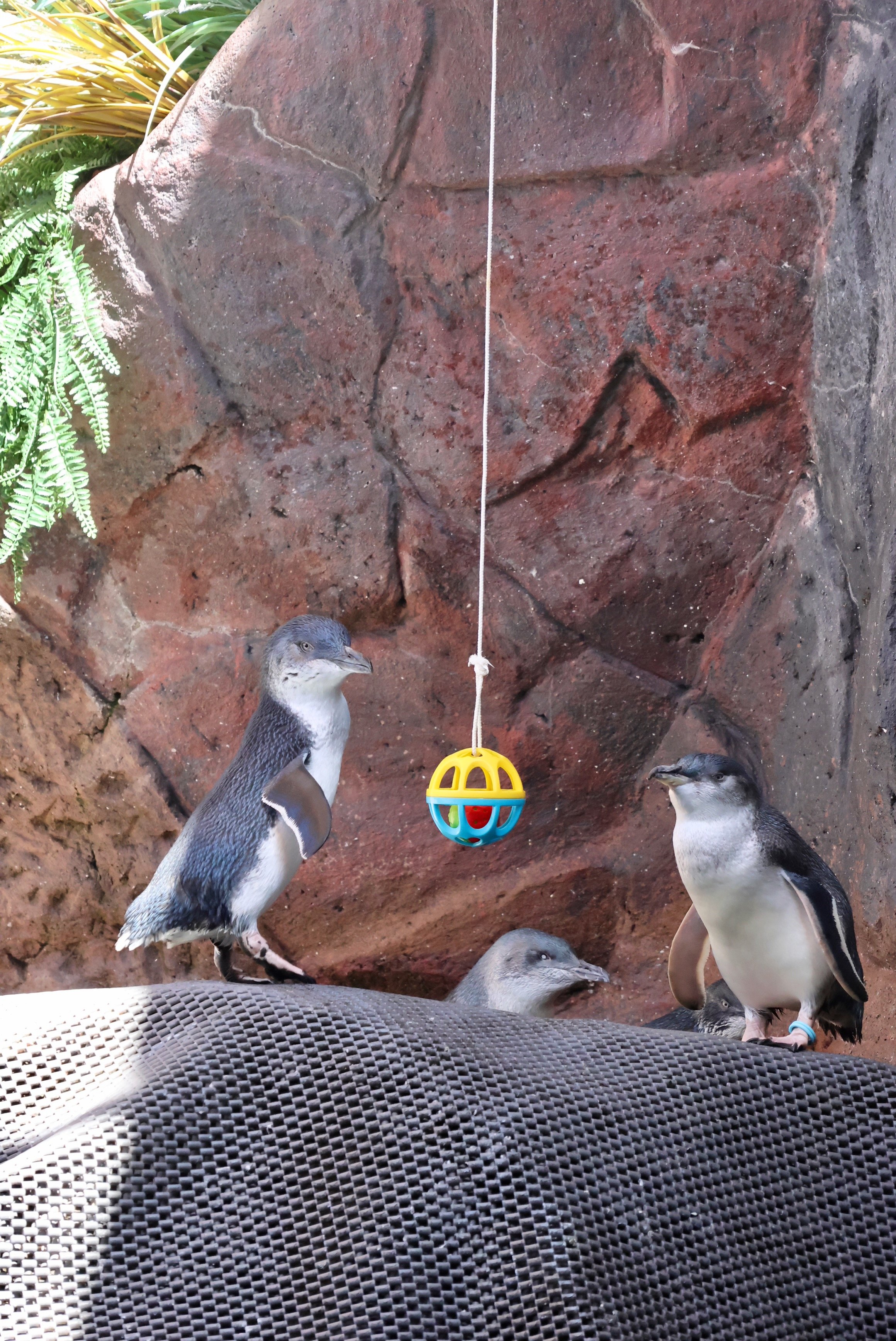


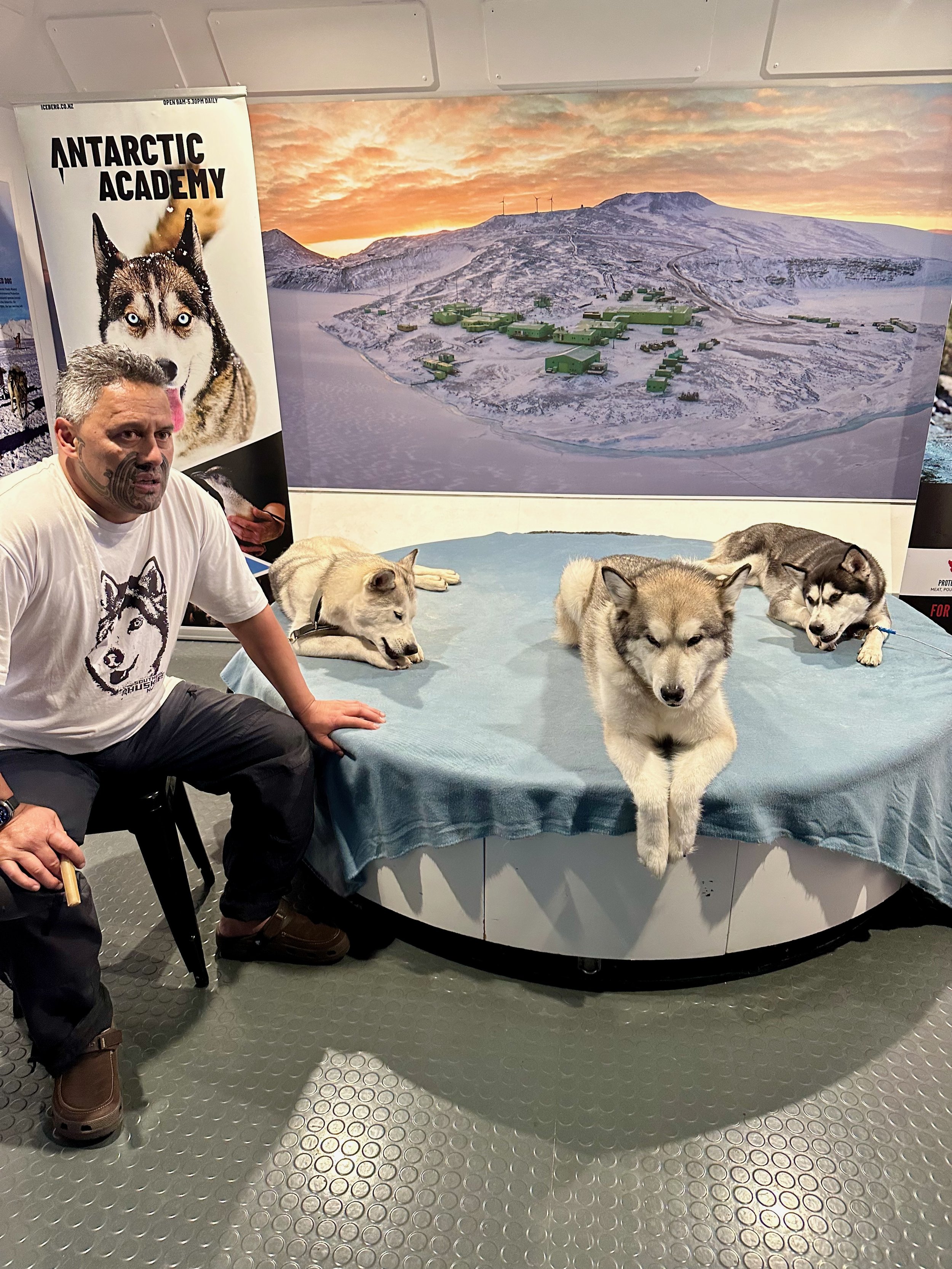
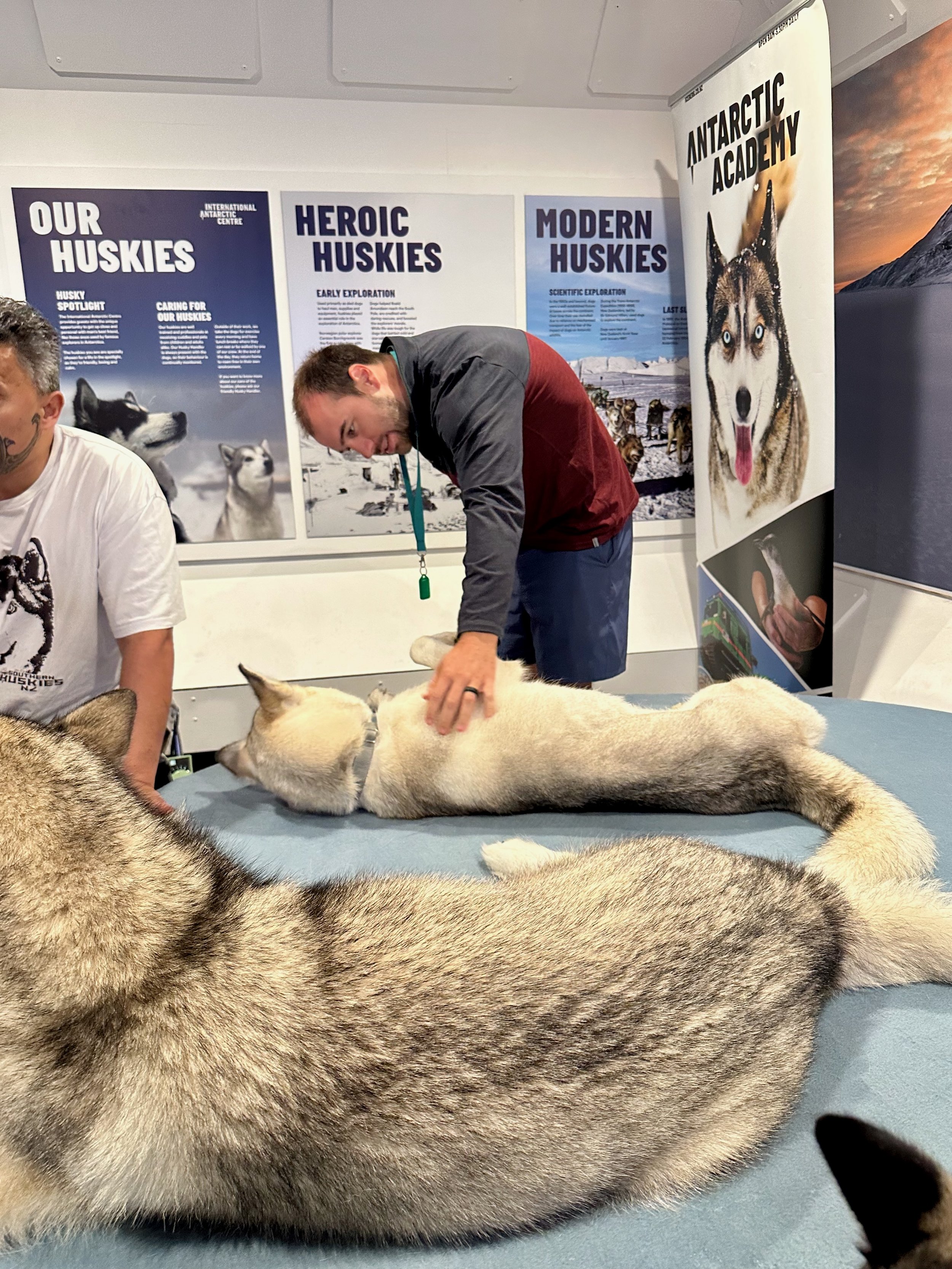
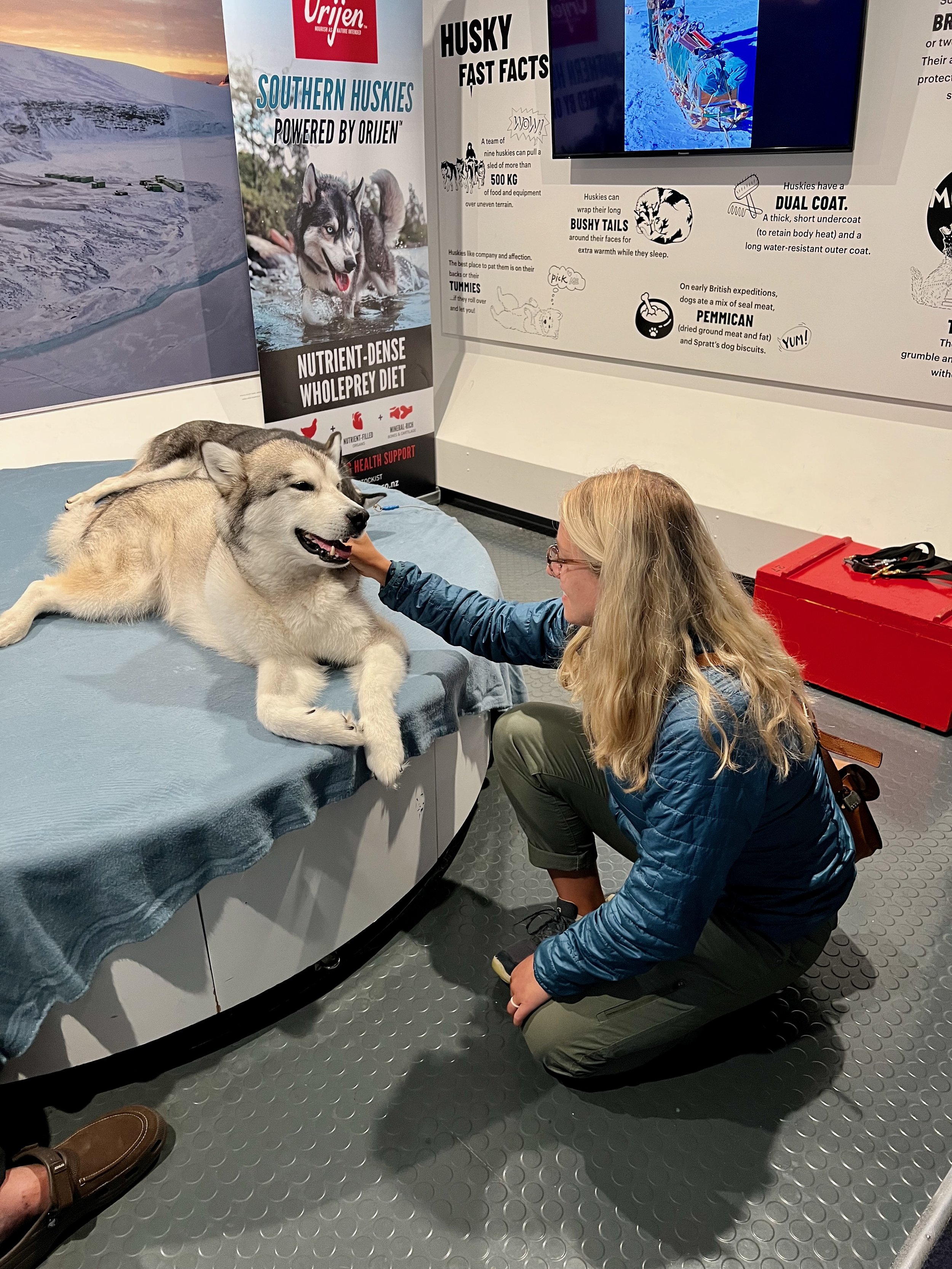
We continued onto Kaikōura that afternoon. It is situated on a peninsula and is home to amazing wildlife watching including whales, dolphins, NZ fur seals, penguins, and albatross. The quick drop off of the continental shelf to 1200m just off shore along with the ocean currents provides a very unique environment where marine wildlife is accessible so close to the shore! We did not partake in any whale watching or dolphin swimming on this trip, but maybe next time. We spent an afternoon in Kairkōura and walked along the peninsula walkway. The rocky coastline was pretty unique from the other places we’ve visited in NZ and was giving off some Maine vibes!
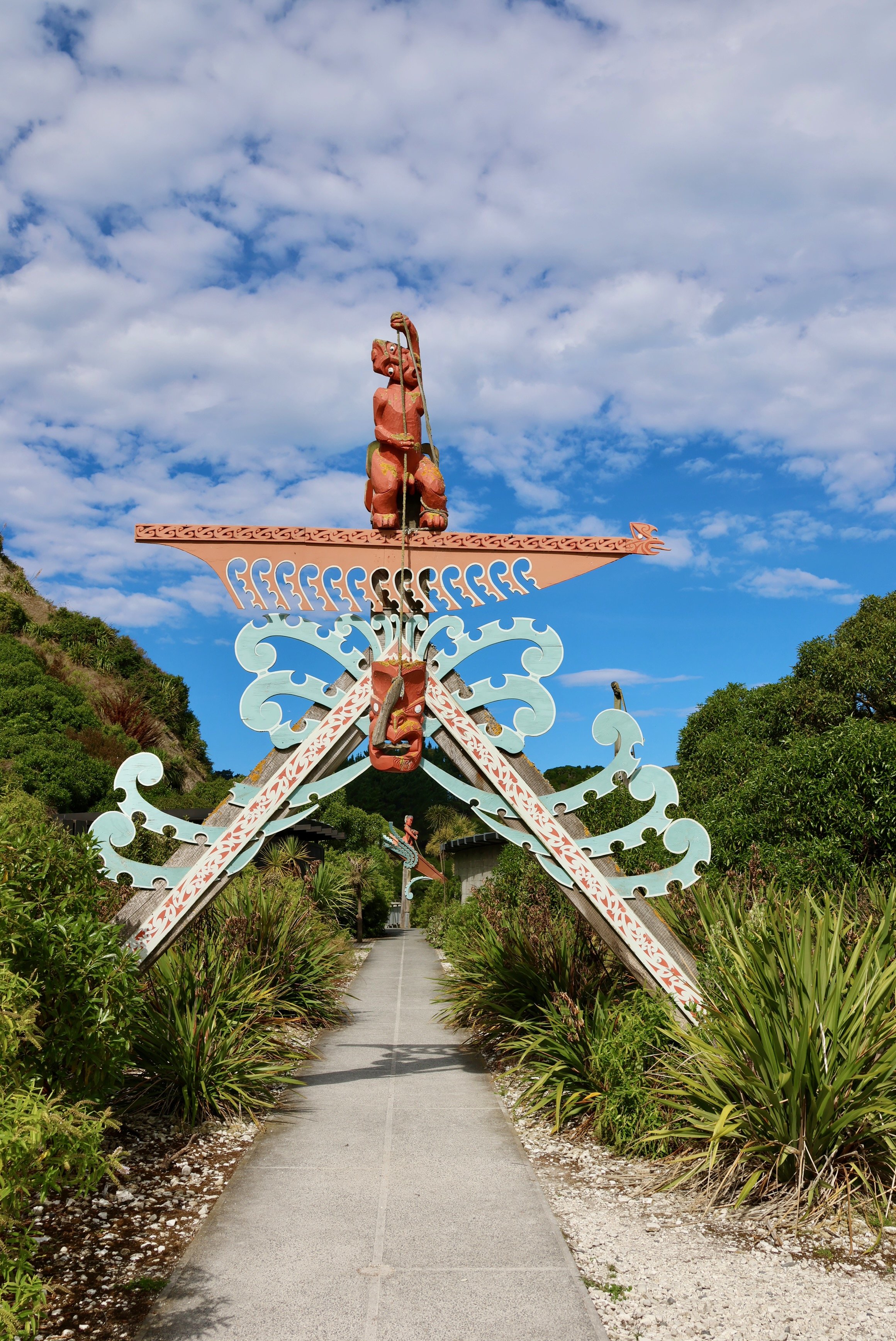
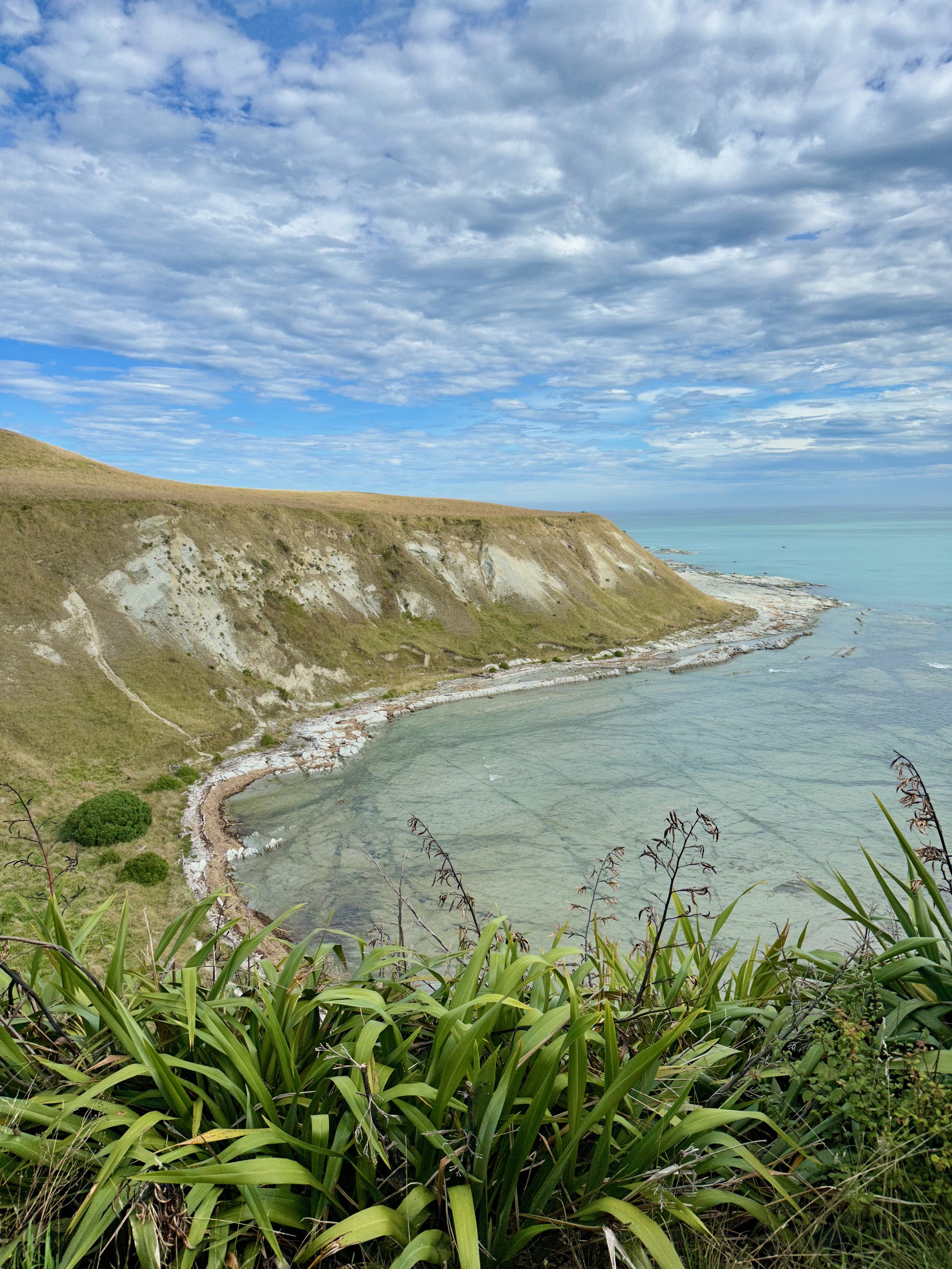
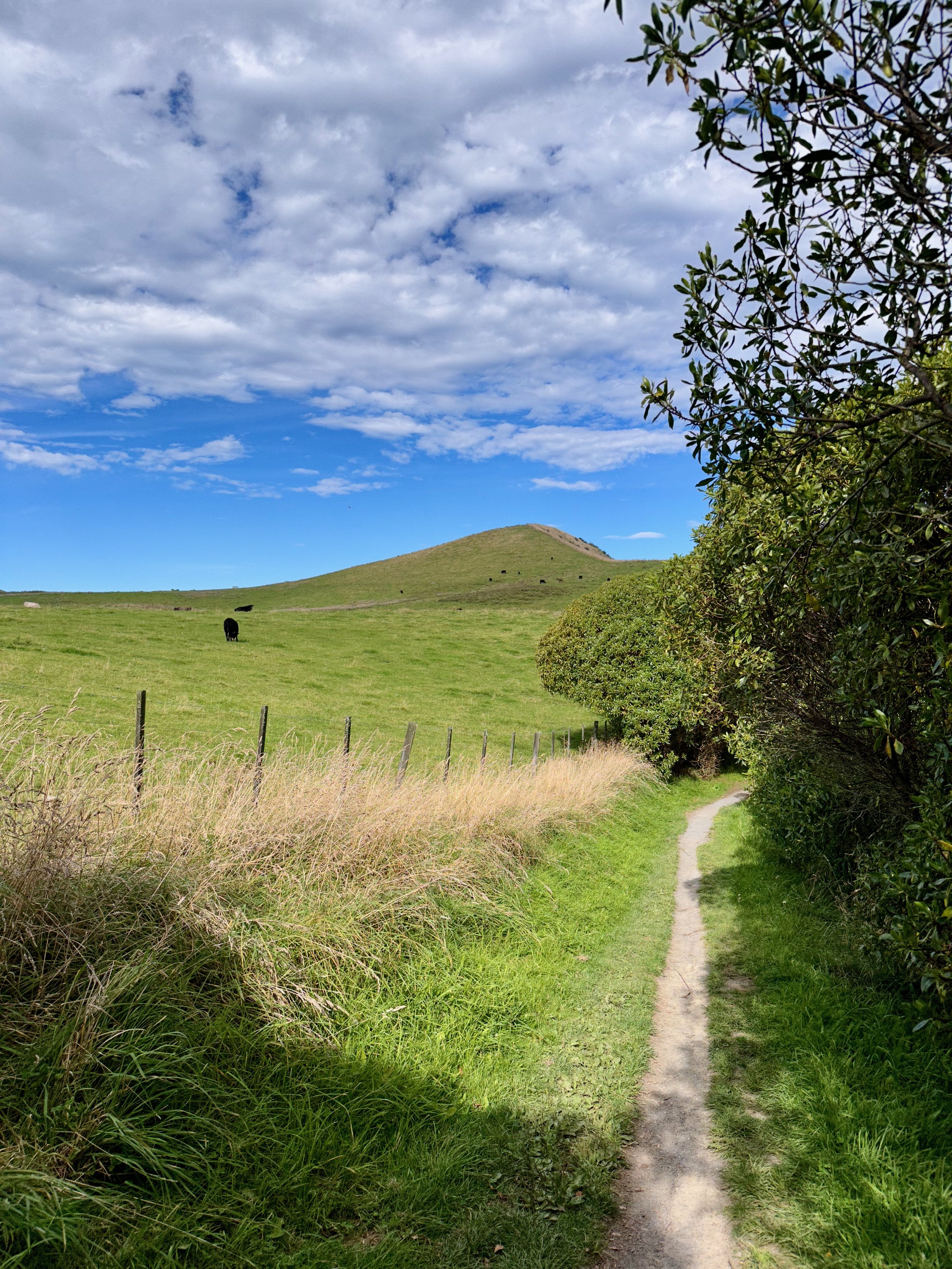
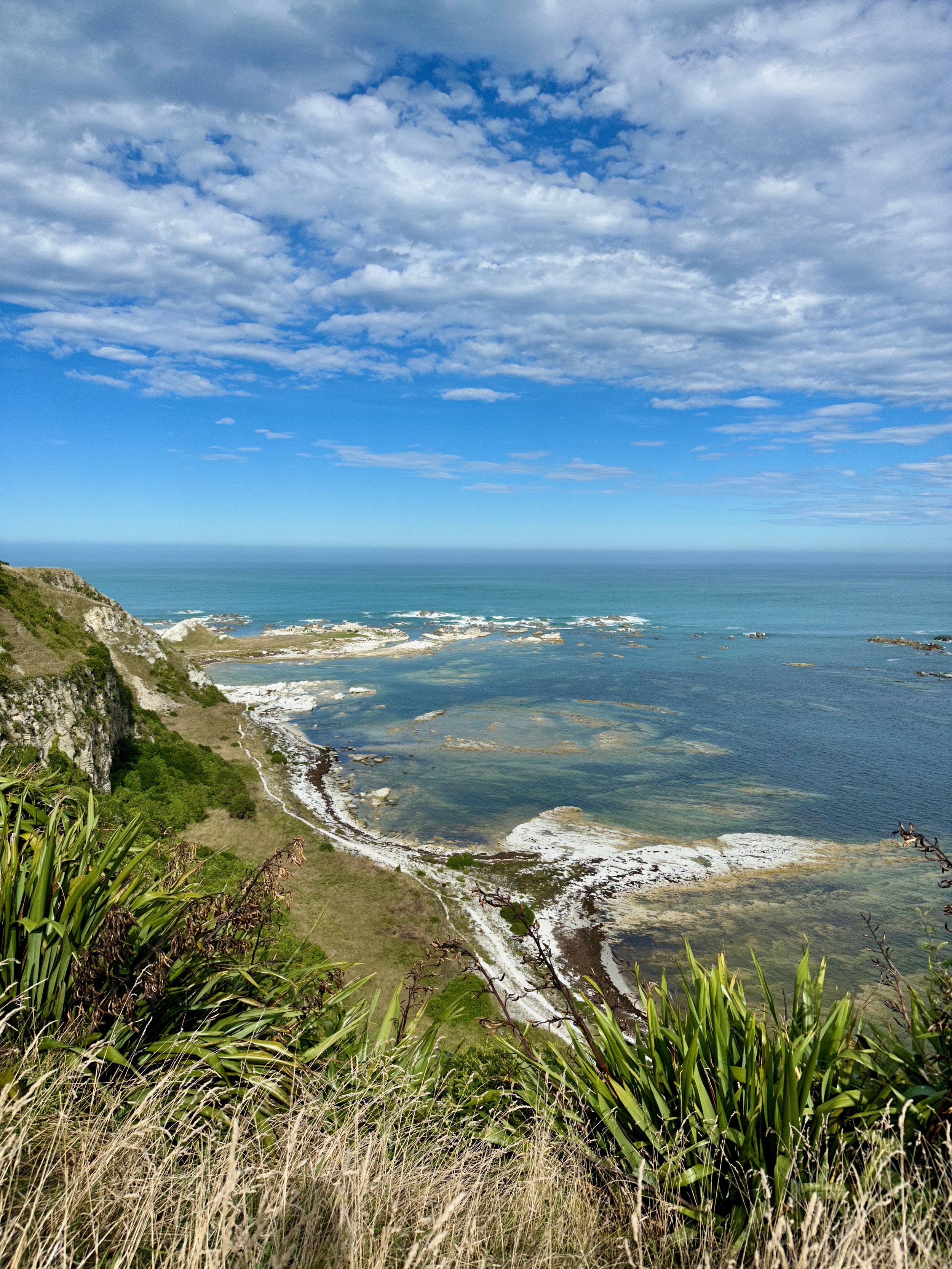
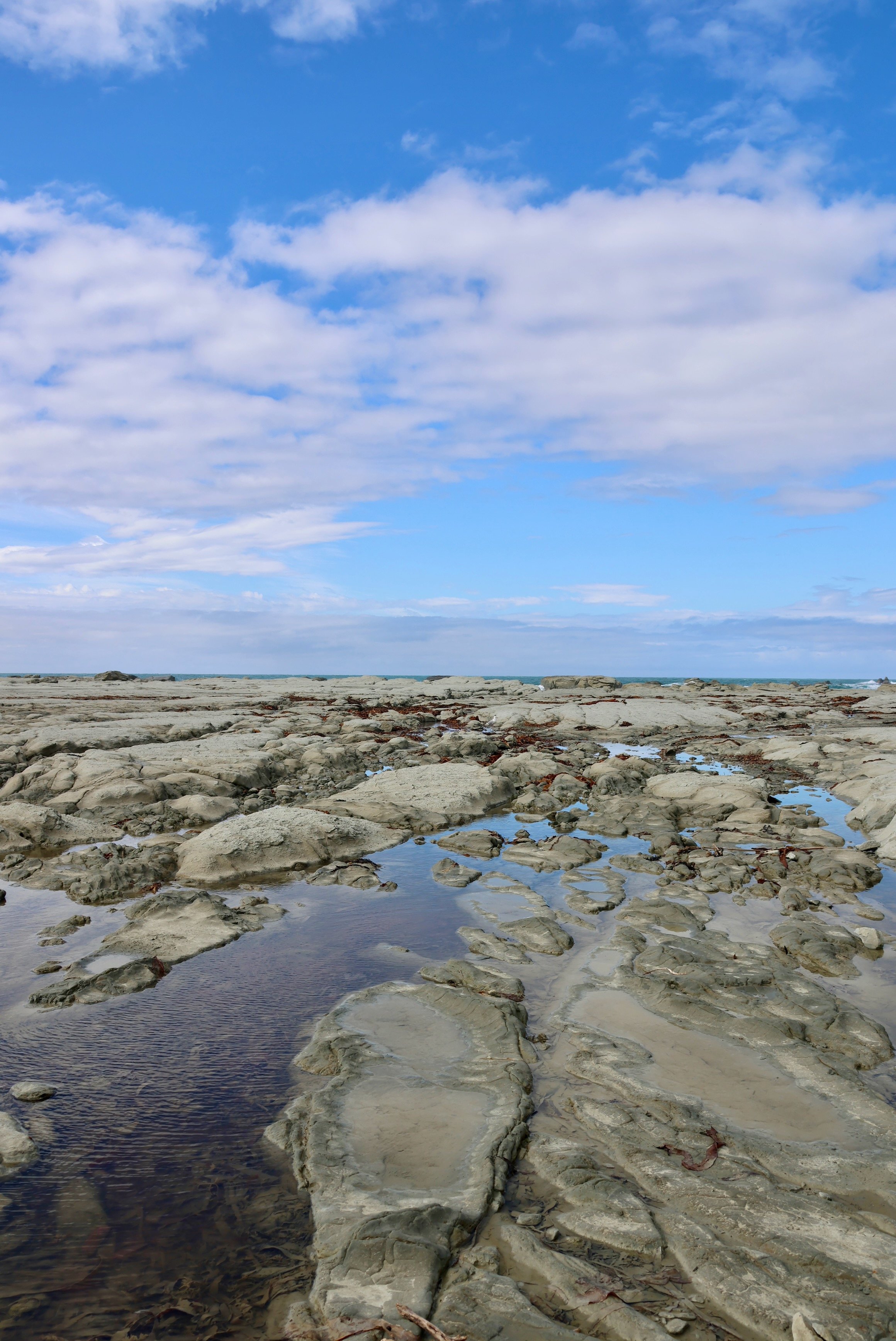
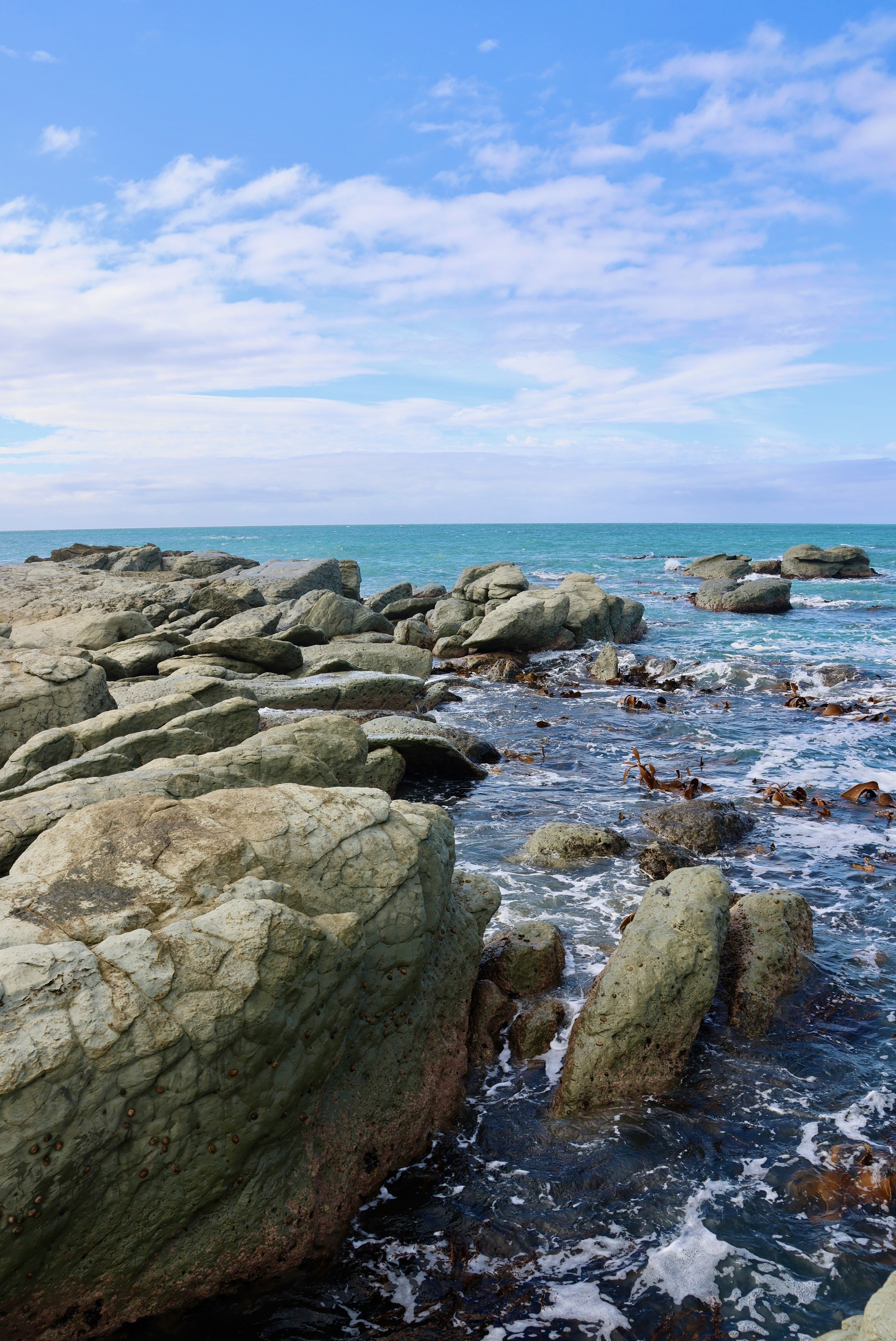
Our last stop in NZ had to be the Marlborough Wine region! This is a relatively young wine country, with the first vineyards starting the in 1980s. However, the region has quickly made a name for itself, especially with Sauvignon Blancs. It is the most productive wine region in NZ and exports internationally!
We visited Cloudy Bay Vineyards and Forrest Winery. Cloudy Bay is a higher end winery, supposedly owned by the Louis Vuitton family, and offered a raw oyster bar to complement the wine. Yes please! Our second stop was Forrest winery, a very laid back winery. We spent the rest of the afternoon here, enjoying the weather, and waiting to catch our 8:30pm ferry back to the North Island.
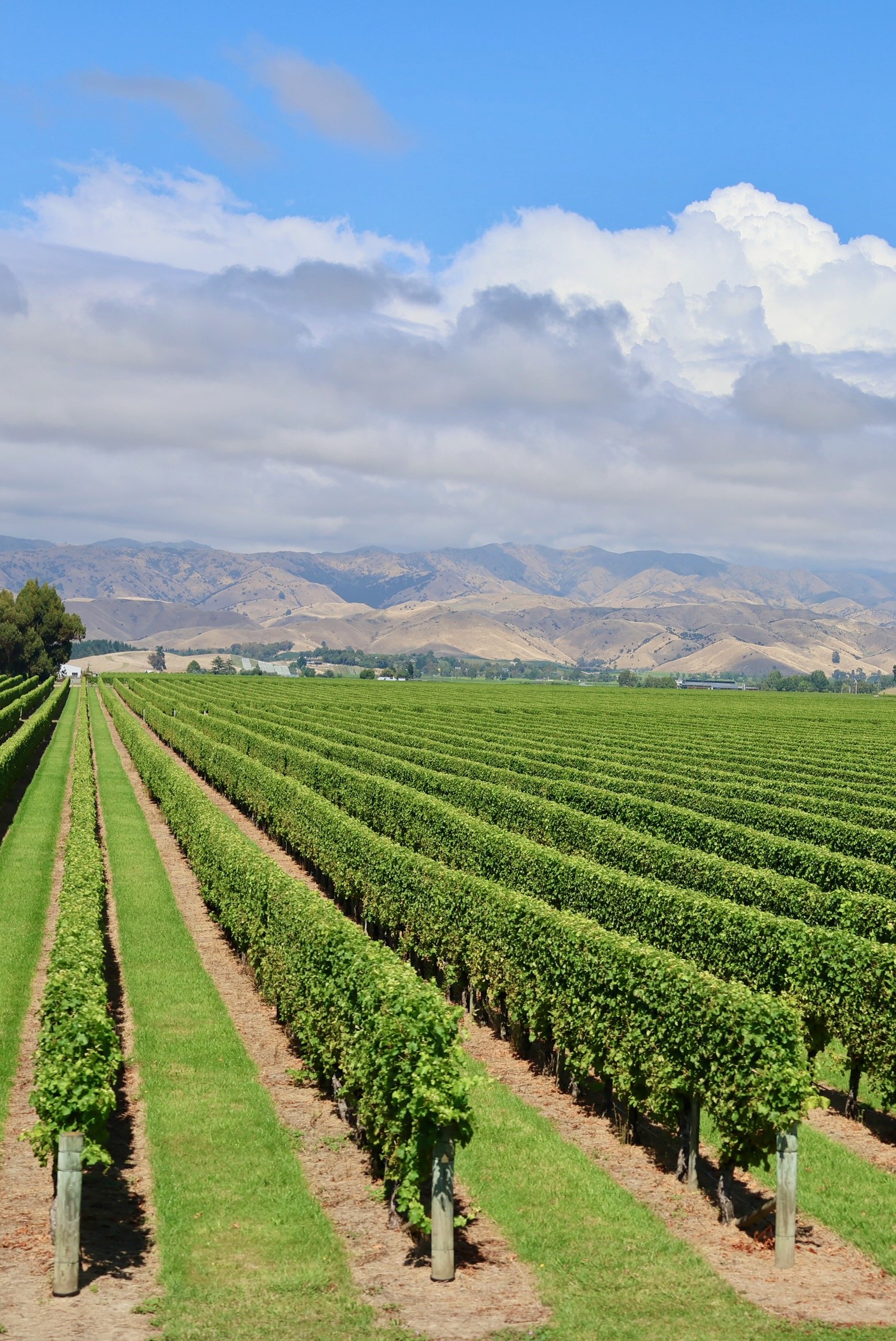
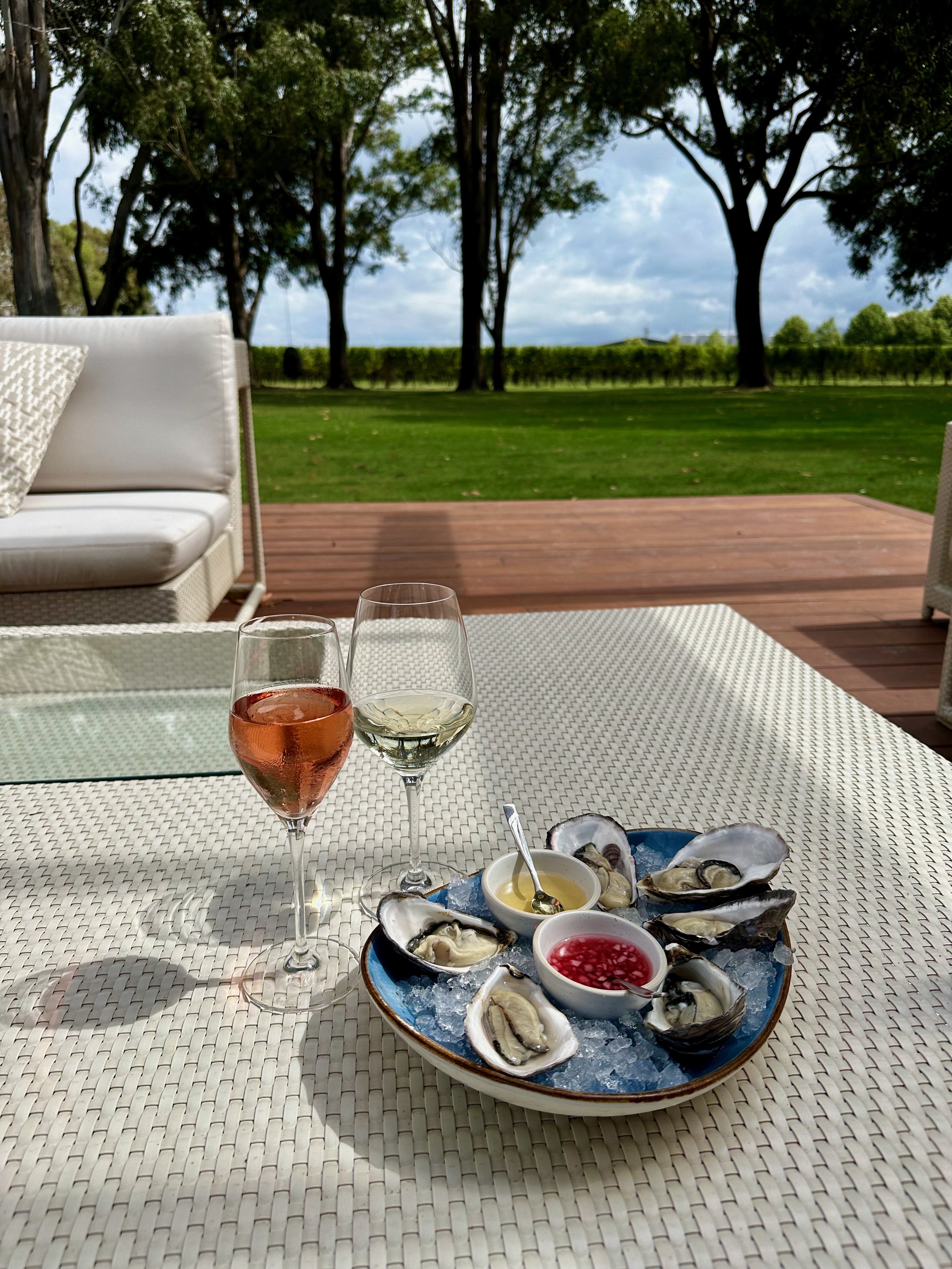
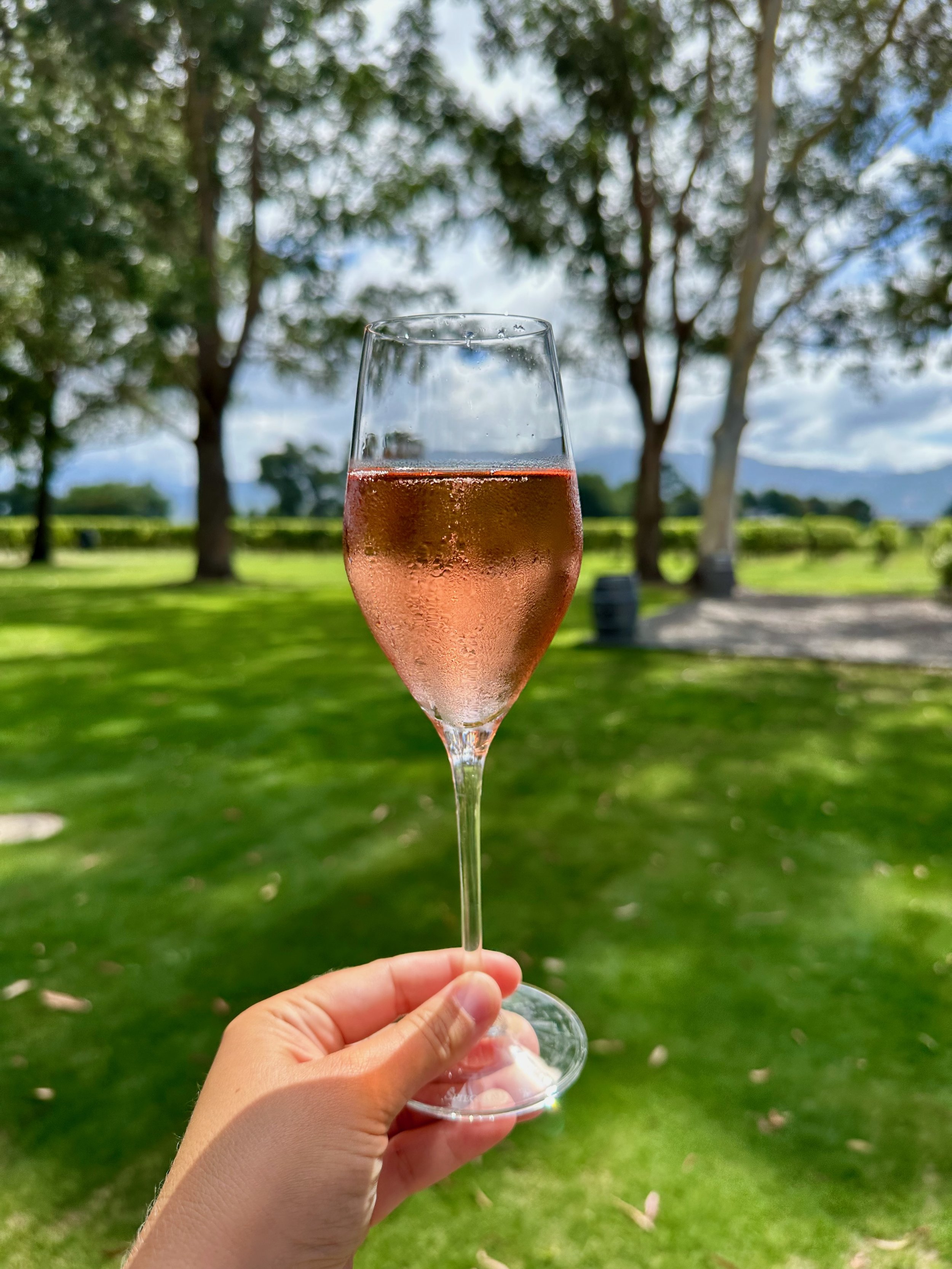

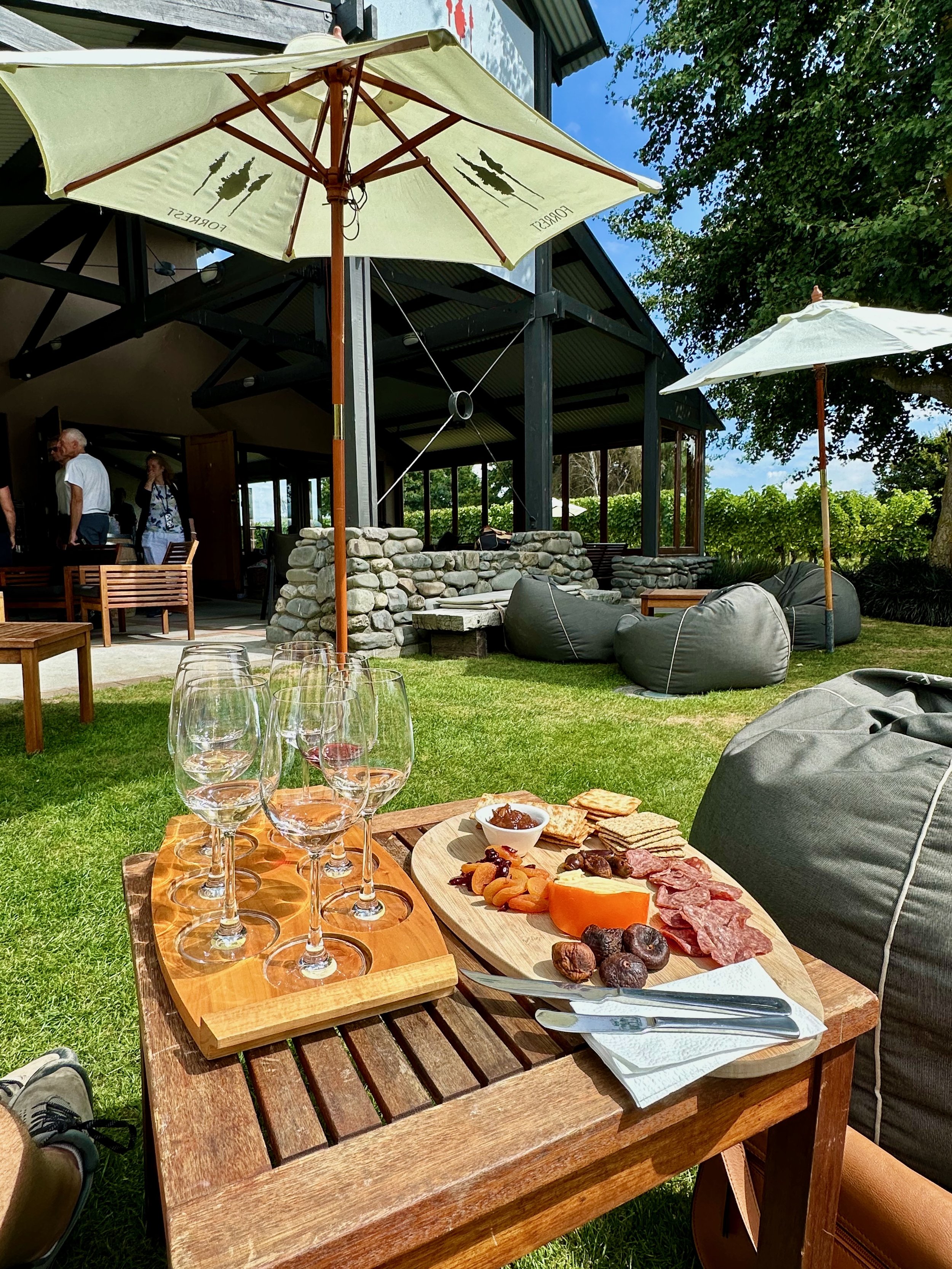
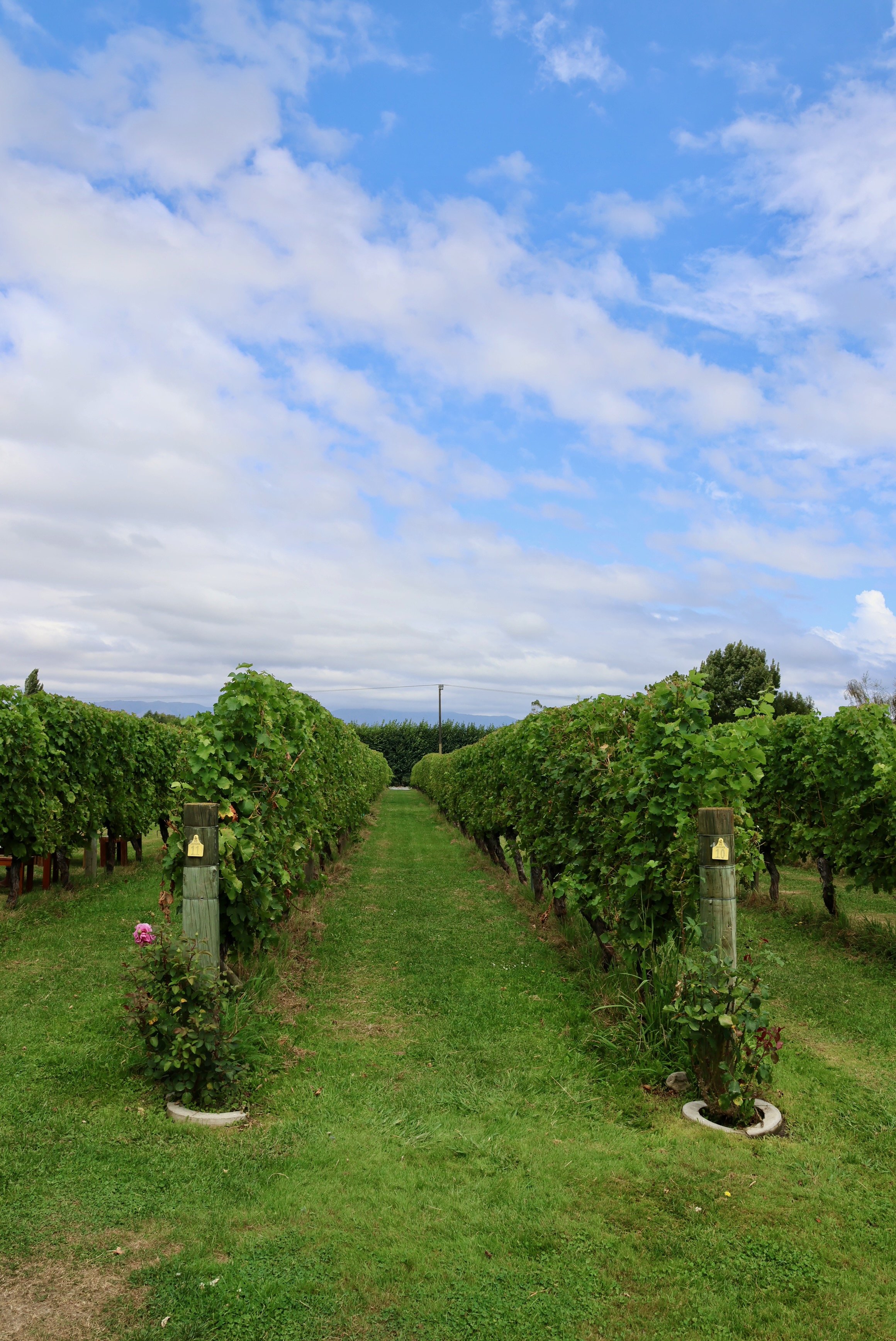
We finished our 29 day adventure with an 8 hour drive from Wellington to Auckland to return our lovely Campervan Rigby to her owners. Rigby was rented from a company called Quirky Campers, which is like Airbnb for campervans. Rigby is a 2011 Nissan van that her owner converted himself. The interior was so thoughtfully designed and we were surprised at how much space we had in our little van! We received several compliments from other vanlifers about our setup since it was so homey. We had throw pillows & a throw blanket, artwork on the wall, live plants, a candle and personal fan. But the best part was the ceiling covered in a fun fabric print! We’ve talked about possibly getting a Campervan and you better believe some of these touches will show up in ours. The other huge thing that Rigby had was a solar panel on the roof! We didn’t have to plug in the car the entire time. Our solar panel powered the 33L chilly bin (mini fridge), the interior lights, and the USB charging port we used for our electronics.

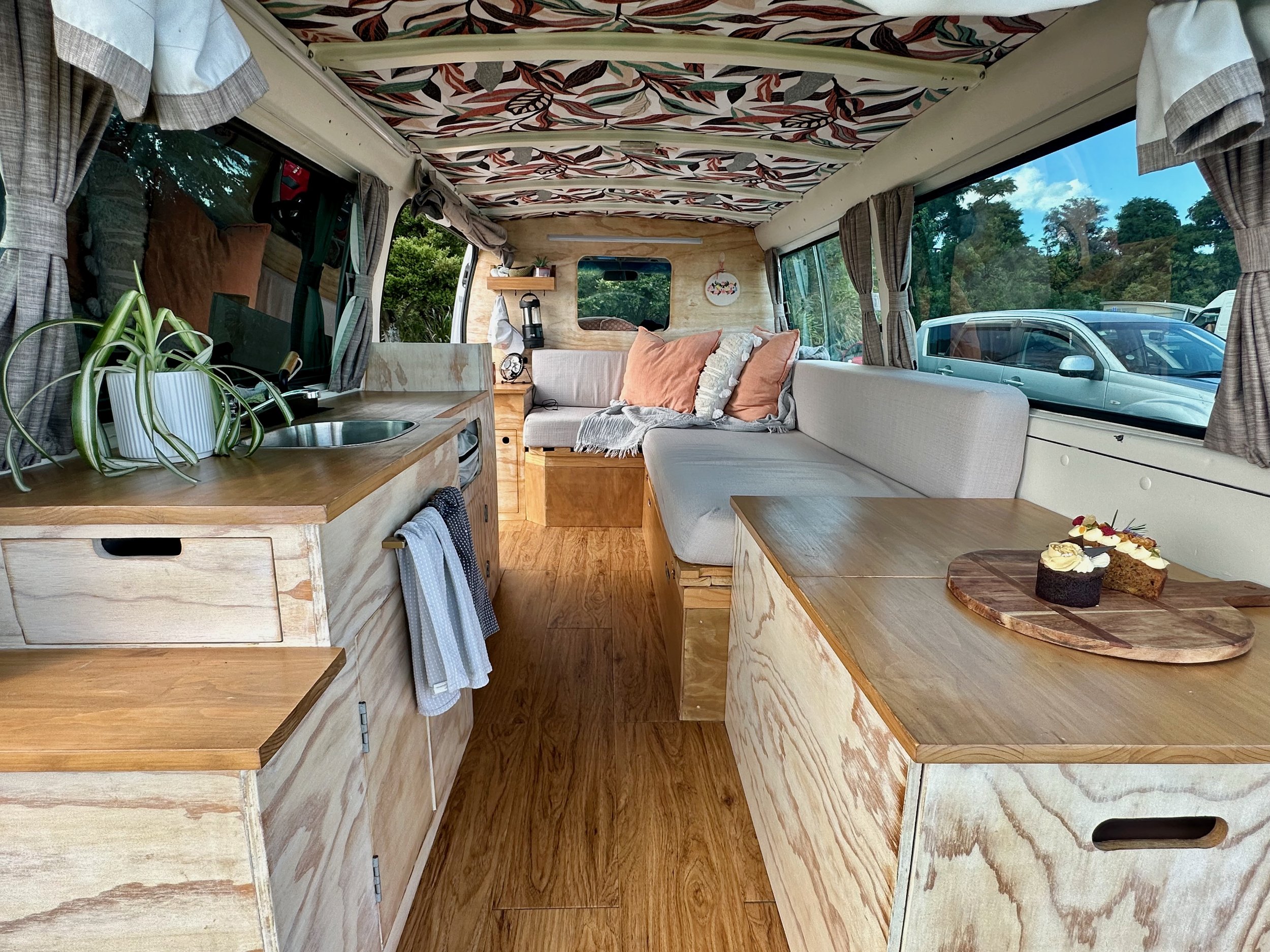
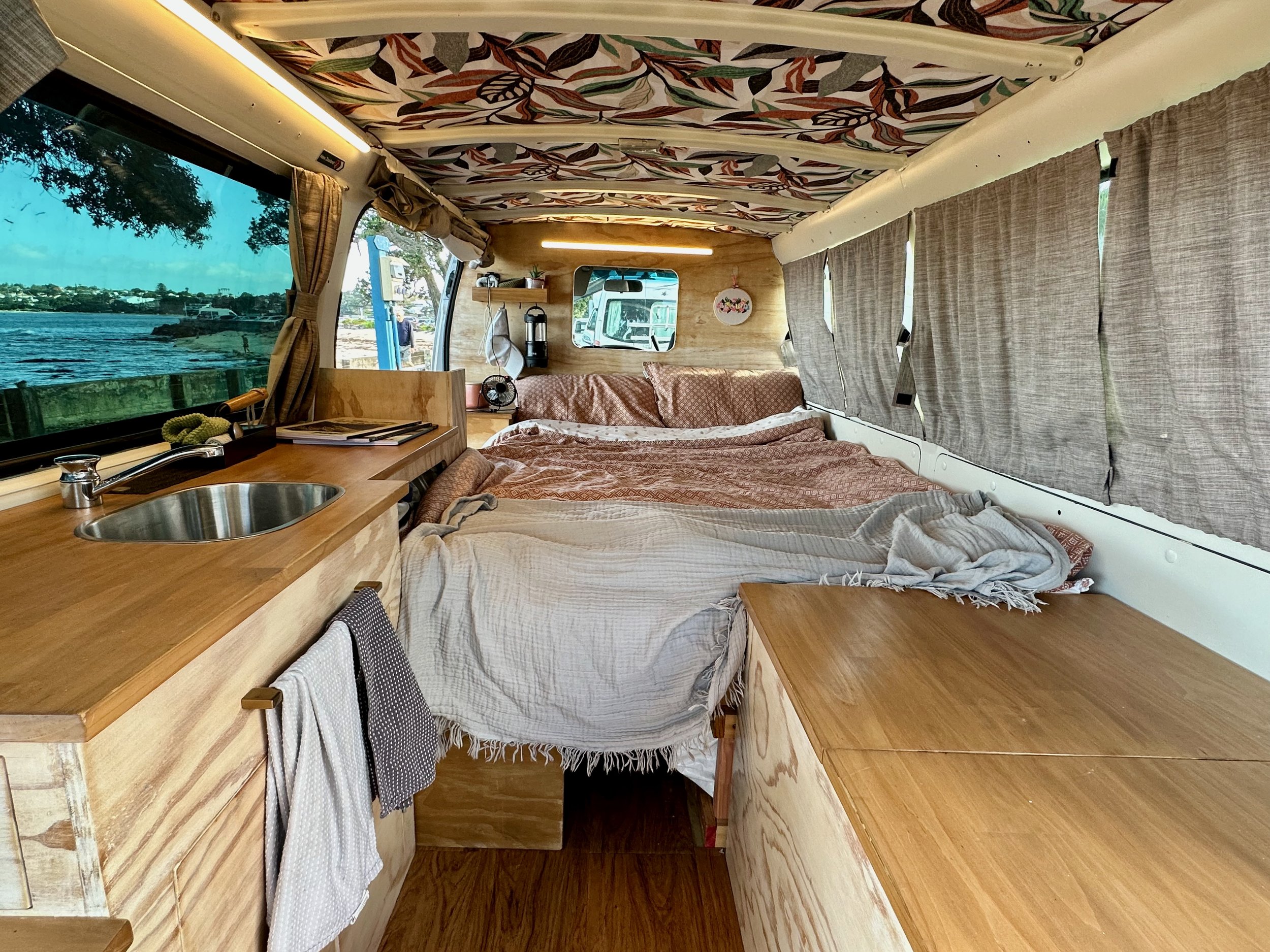
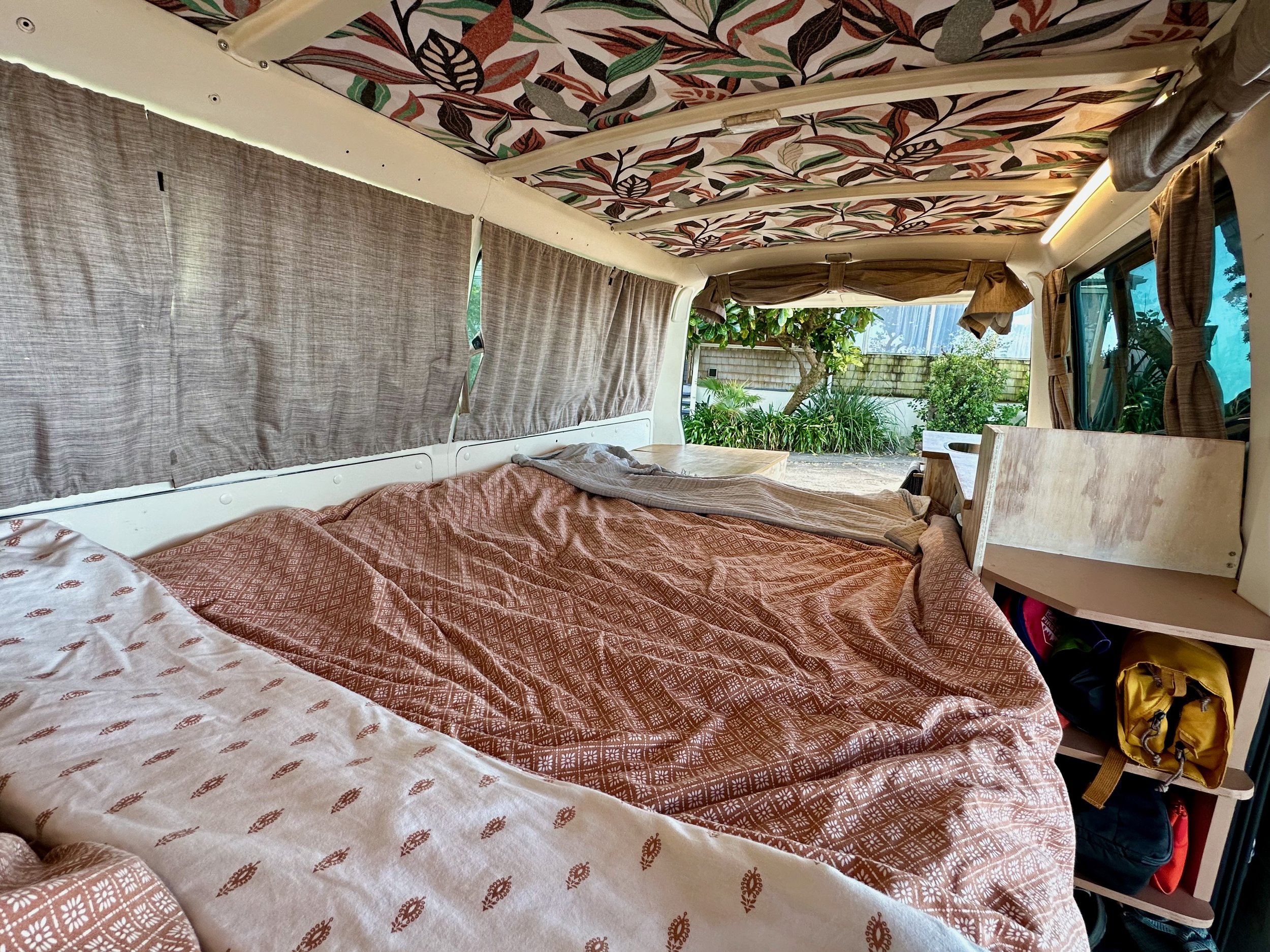
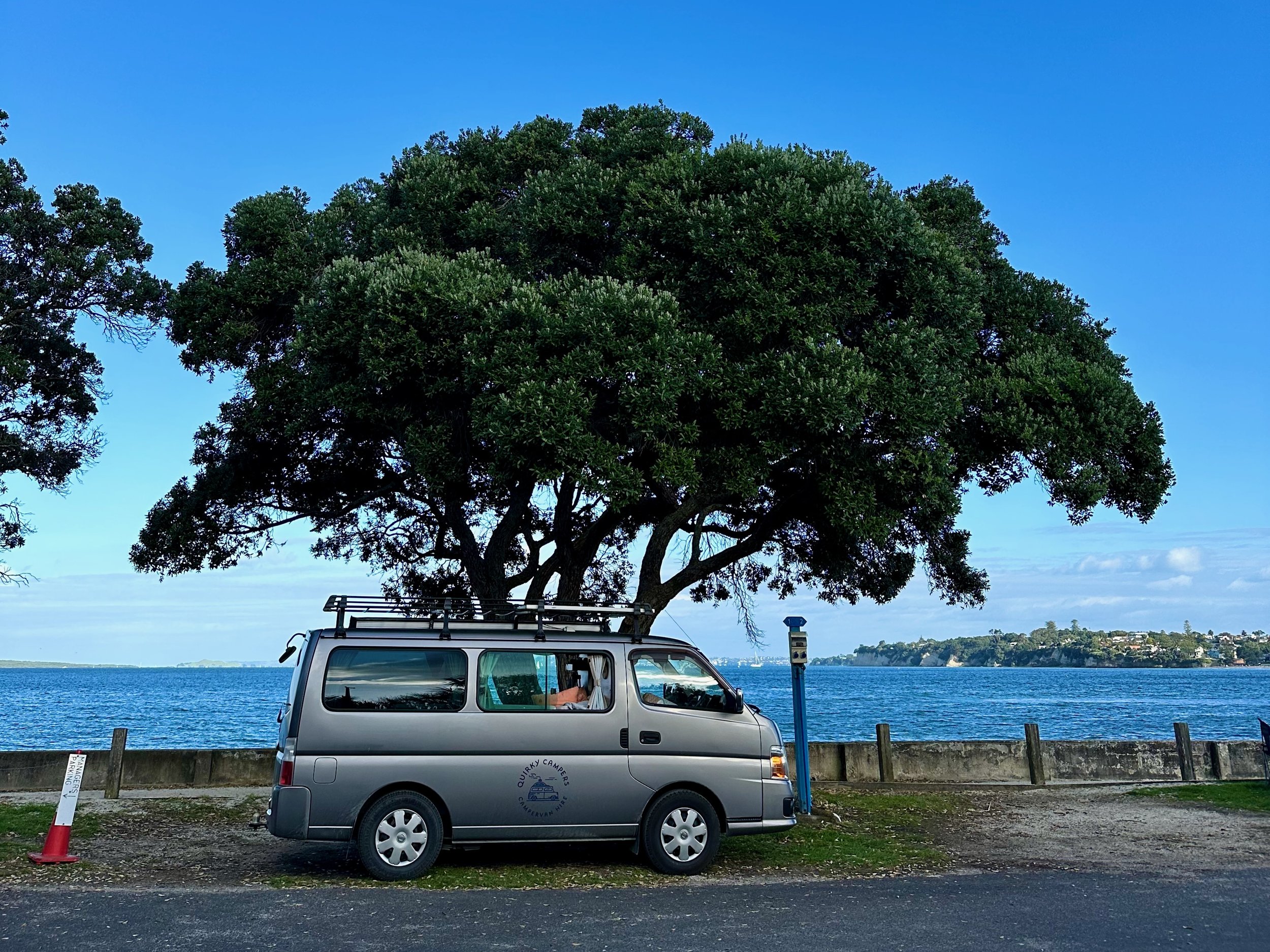
The other thing we haven’t really touched on is where we stayed while in the van. New Zealand and Australia have a great Campervan setup with campgrounds located everywhere. There are multiple apps to help you find and book the campgrounds (we used CamperMate). The campgrounds are like RV parks in the US. There are a range of campgrounds. The lowest level is freedom camping. Basically, if you are a self-contained vehicle (aka you have a toilet and fresh water) you can park for free in designated areas. Some freedom campsites have a toilet but it’s very minimal. The next level is your normal campground. These are like paying to car camp in the US. You’ll have access to running water and a toilet at minimum, with some having hot showers, kitchen, and wifi. The highest quality campgrounds are called Holiday Parks. These have all the amenities and are really nice! You’ll have access to hot showers, full kitchen & BBQ area, laundry, wifi, and sometimes a pool/hot tub and kids playground. These are the most expensive but worth it in our opinion. We mostly stayed in Holiday Parks after trialing Freedom Camping and regular campgrounds.
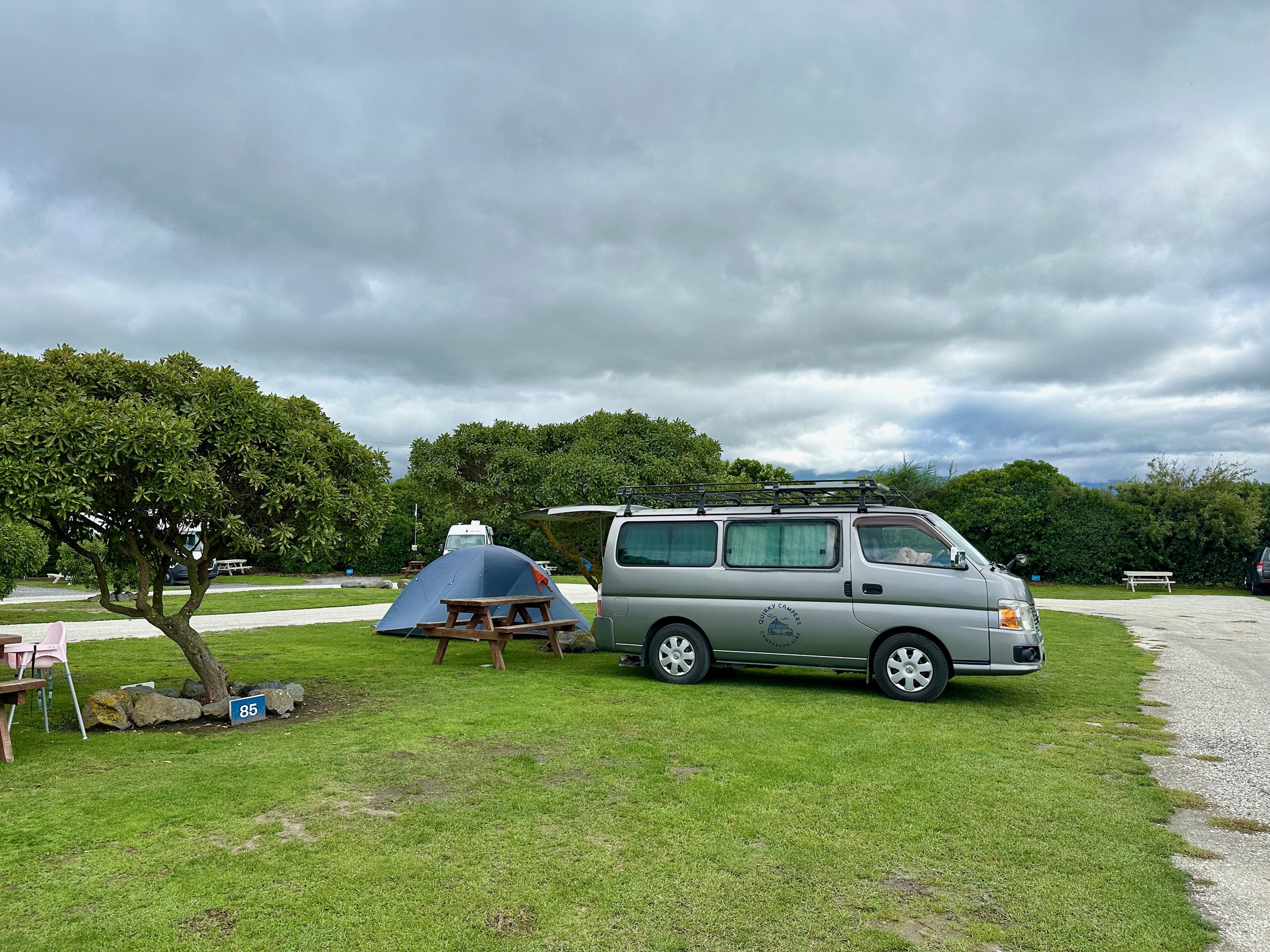
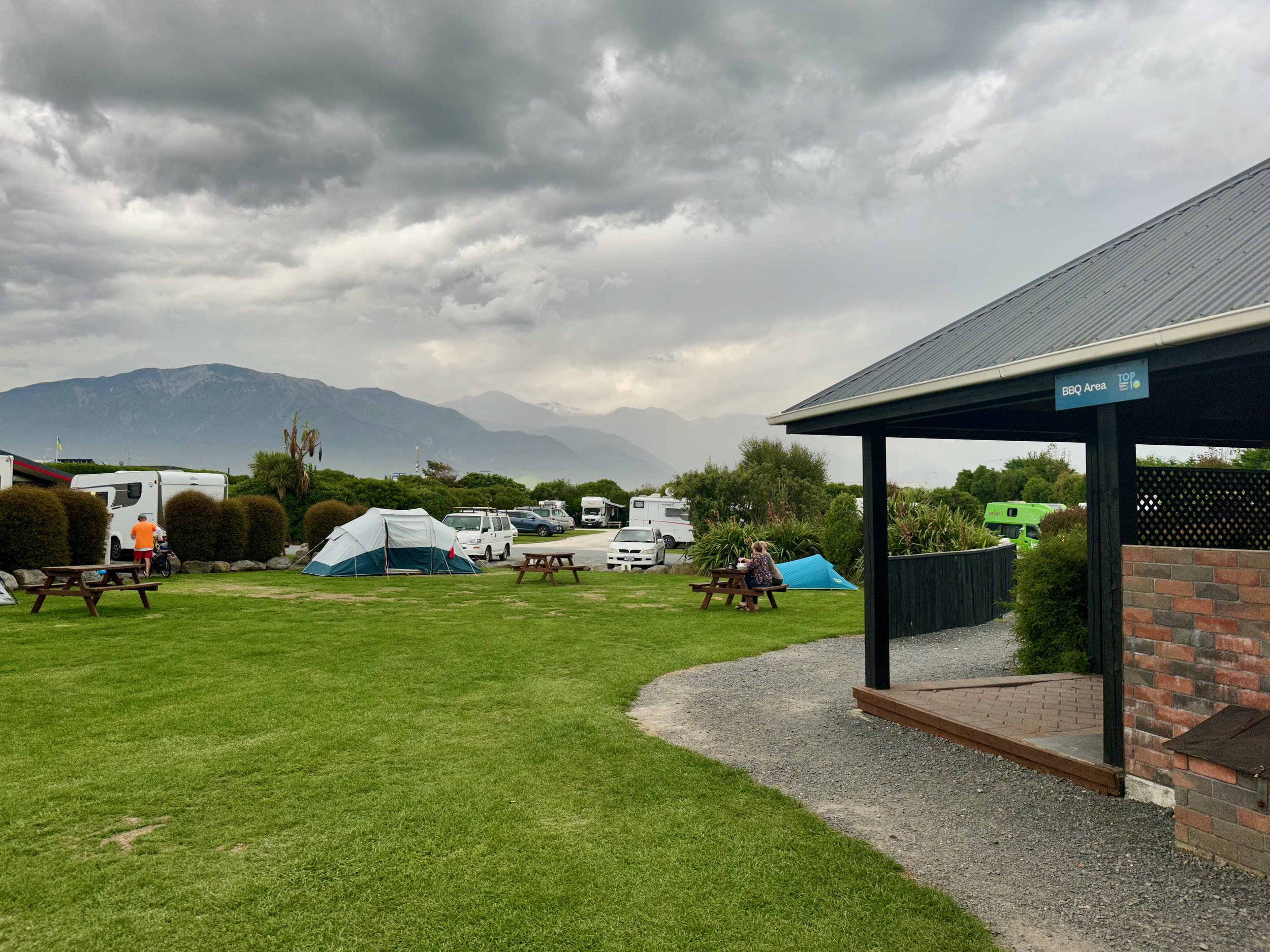
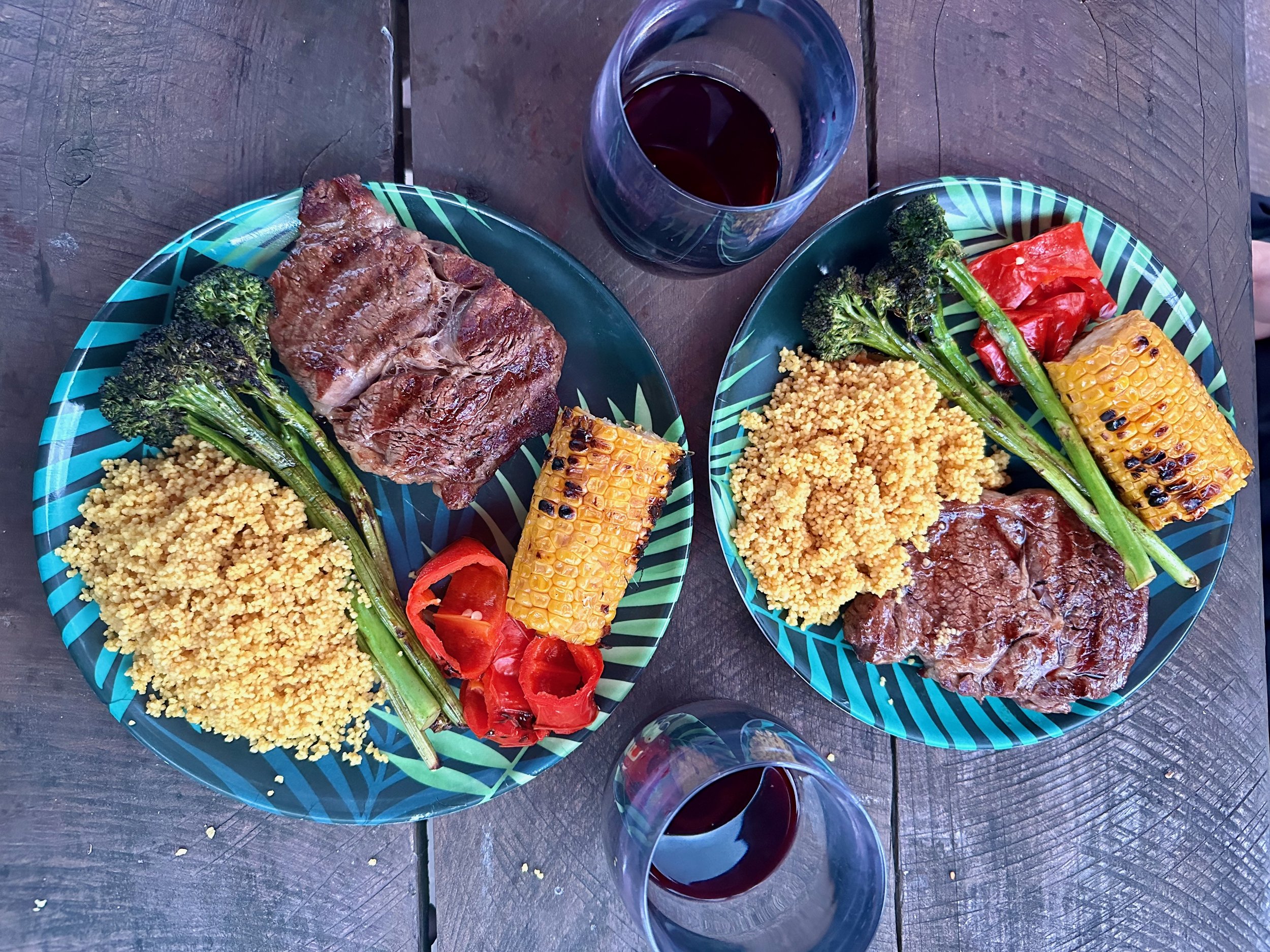
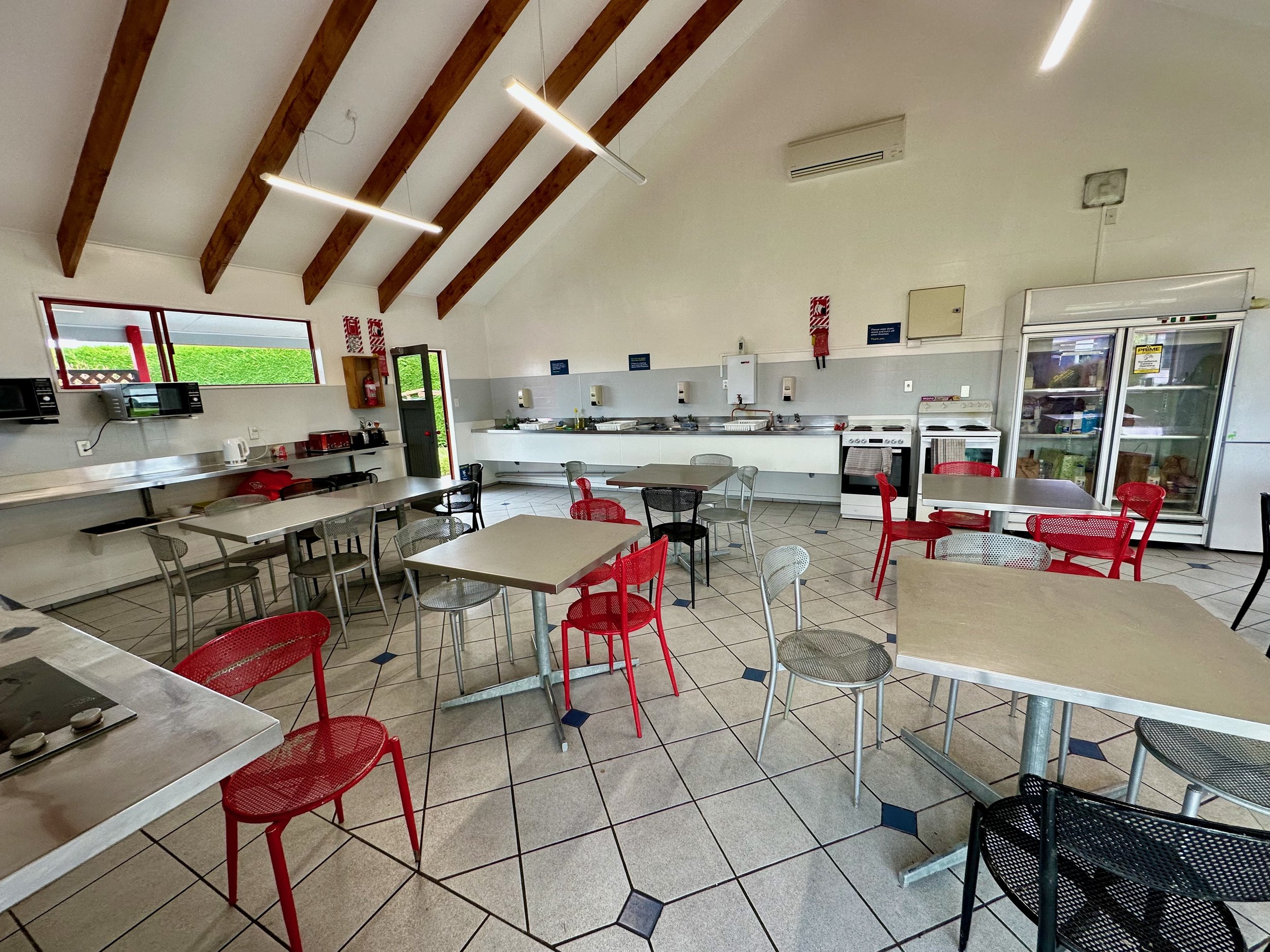
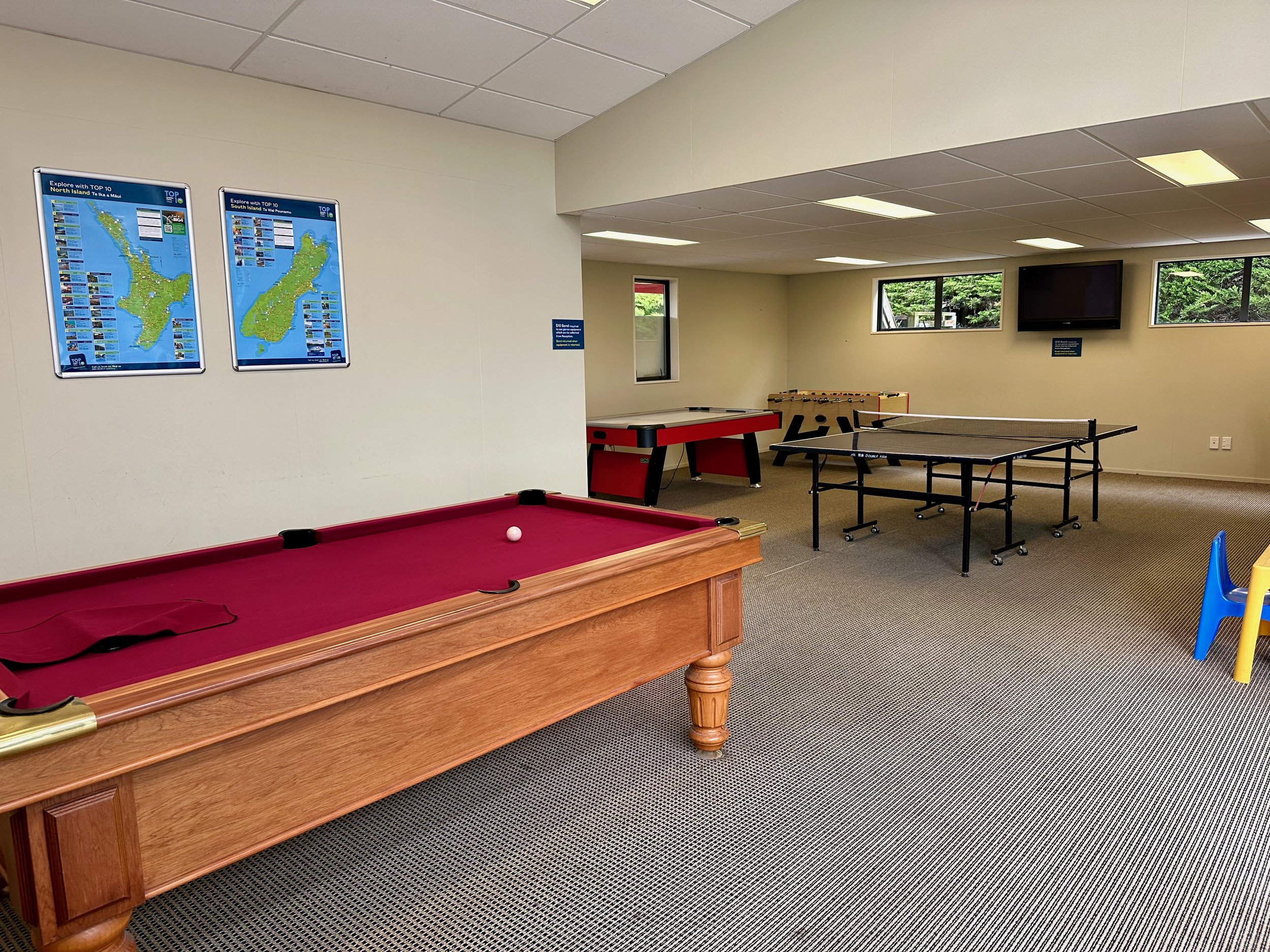
We loved adventuring in Rigby over the past month! It was fun learning how to navigate van life… where you cook, eat, relax, sleep, and drive all in the same 14ft x 6ft area. We drove 5500km (3400 mi) in 29 days and saw so much of the North and South Island of New Zealand. It was a very aggressive plan, and pretty exhausting, but looking back, there isn’t a single thing we would cut out. In fact, we have more places we want to visit now than when we started! New Zealand is an amazing country with stunning scenery, the nicest people, and a relaxed way of life. We can’t wait to return someday, hopefully for longer!

